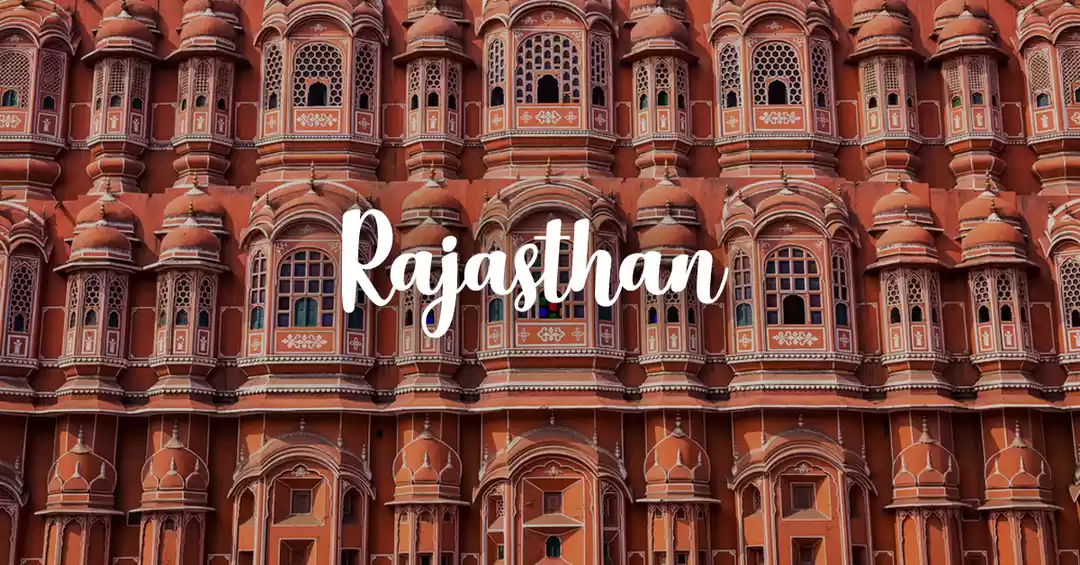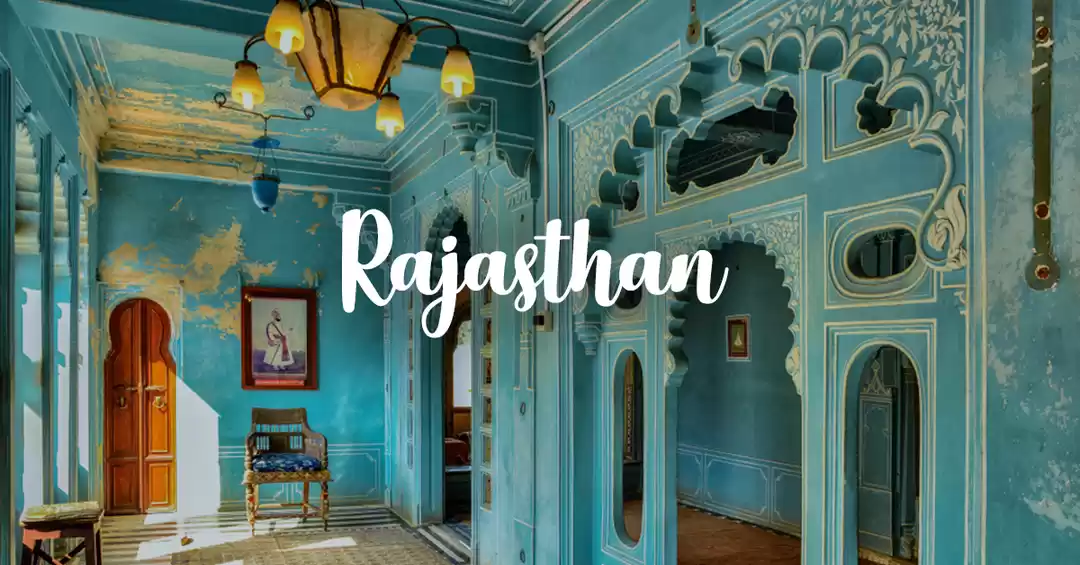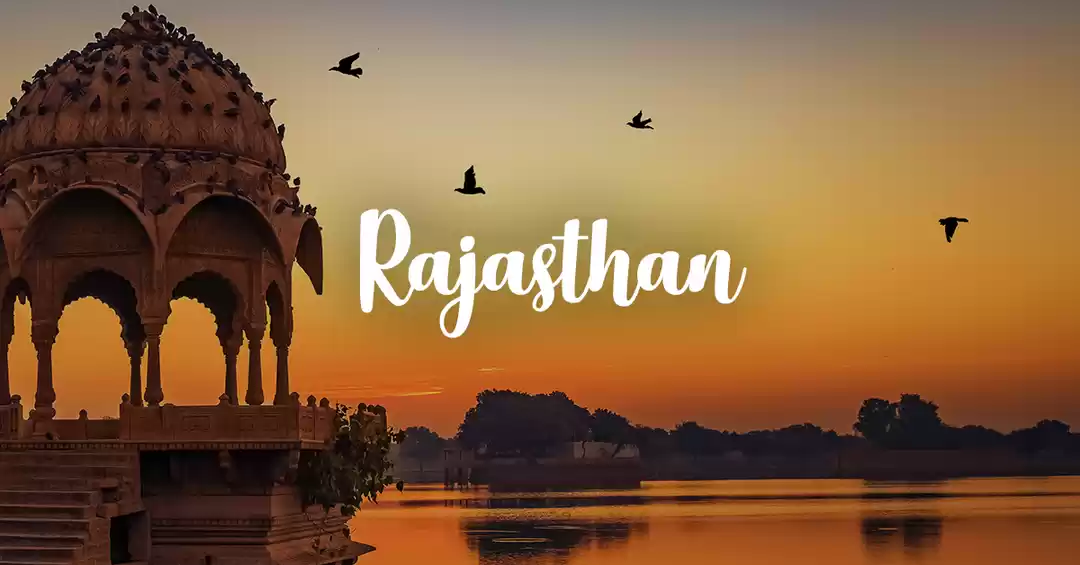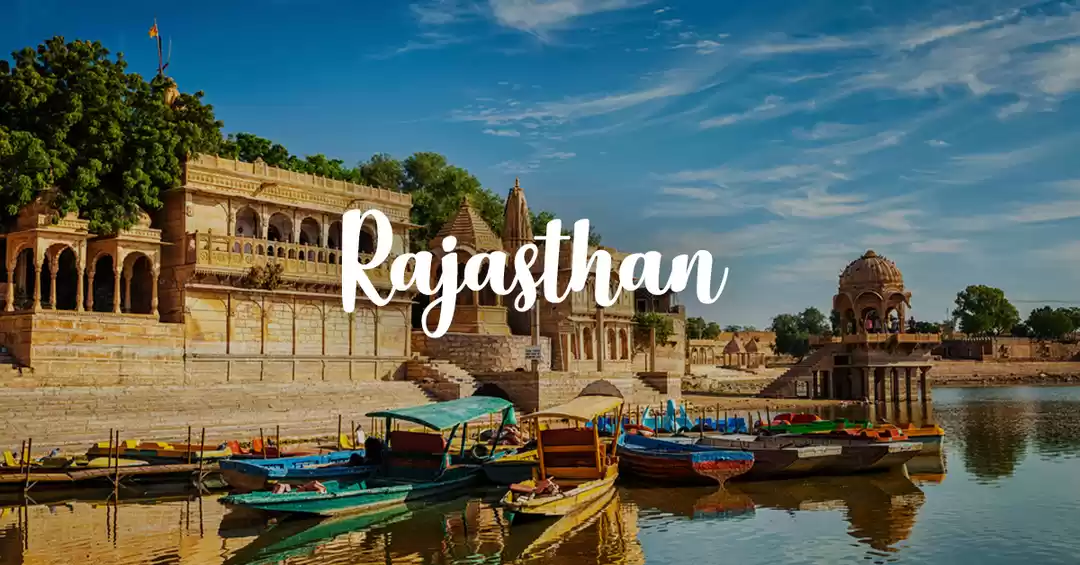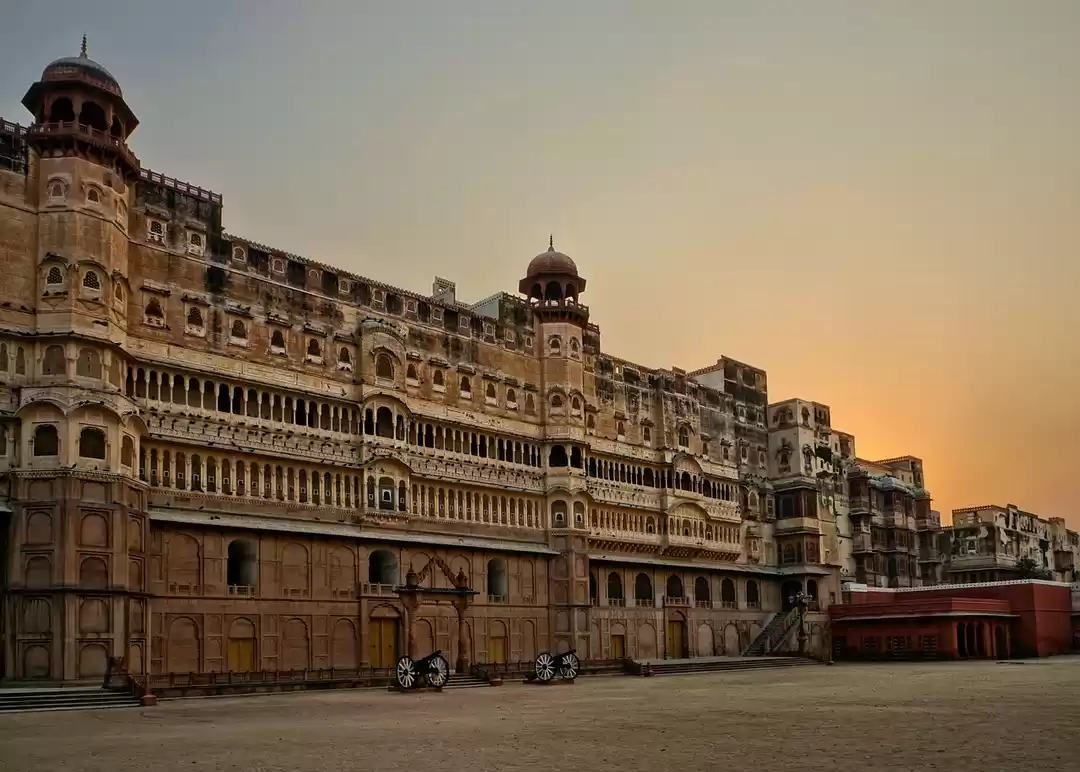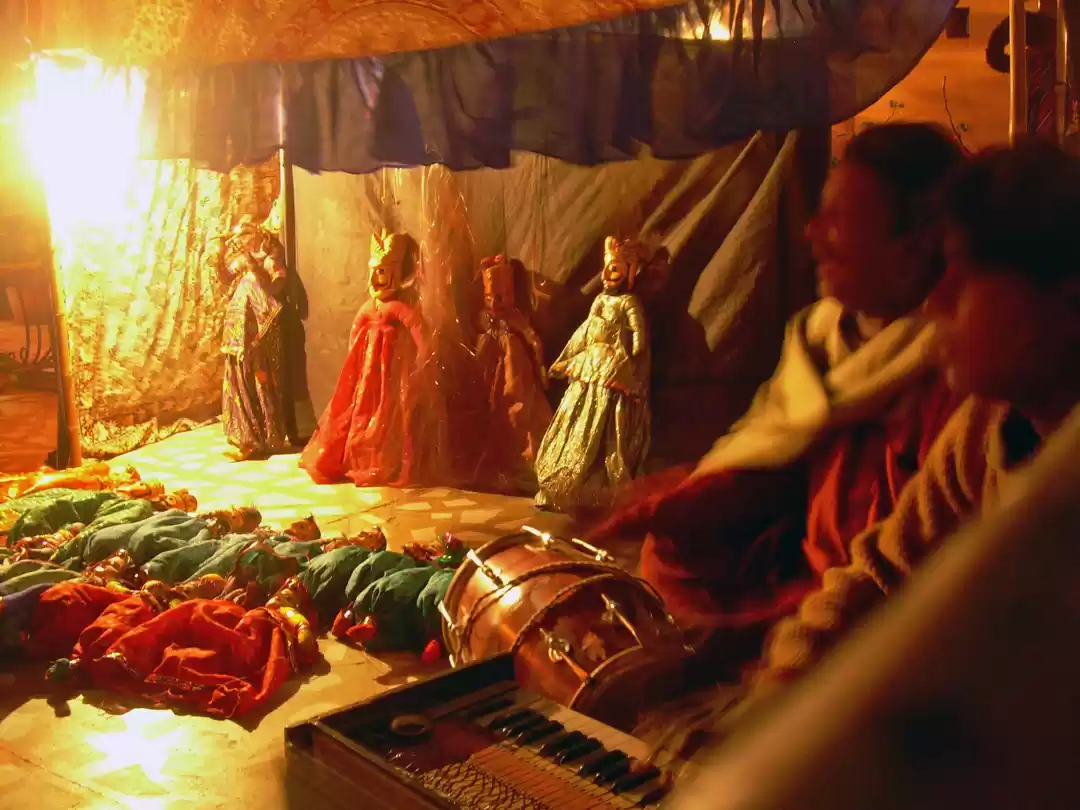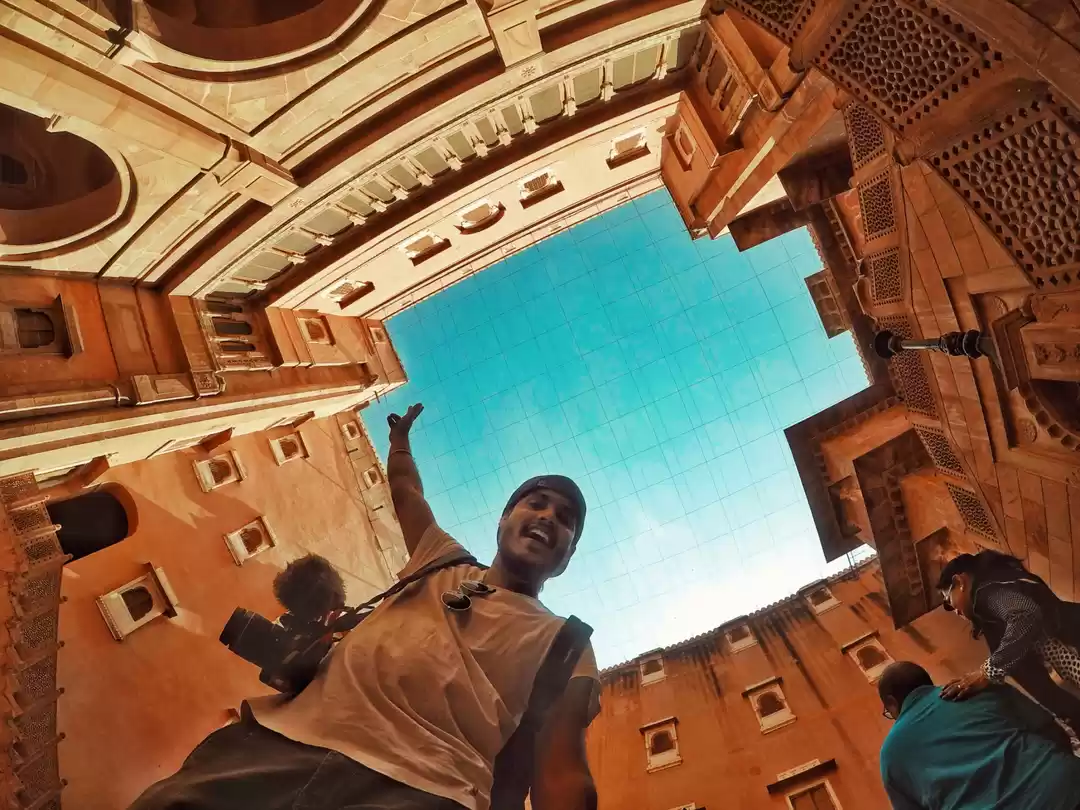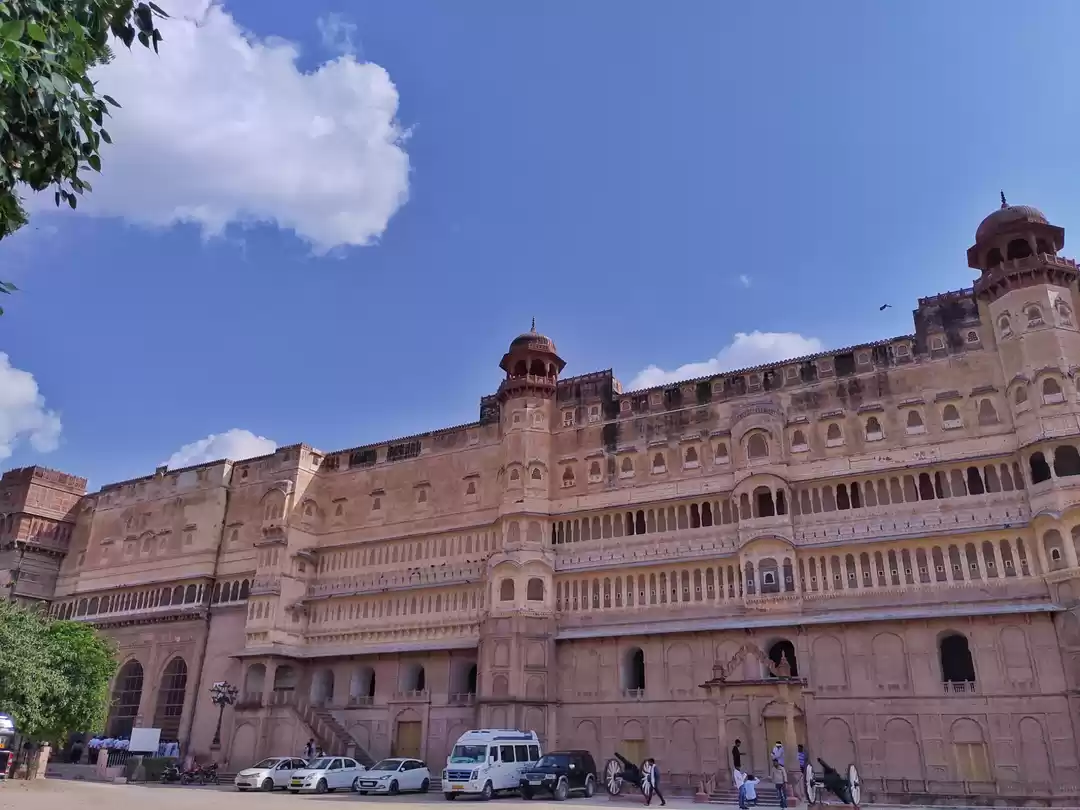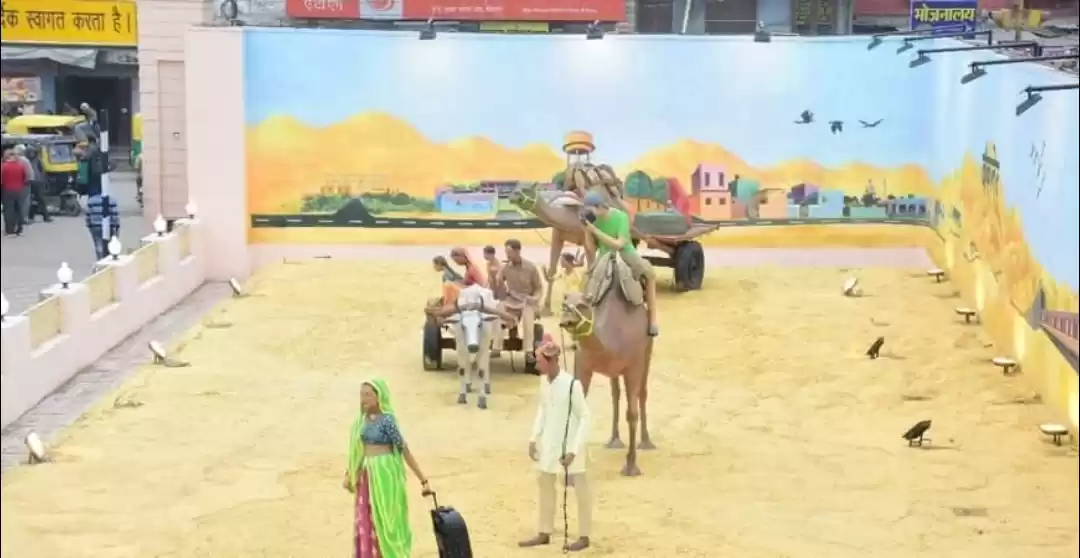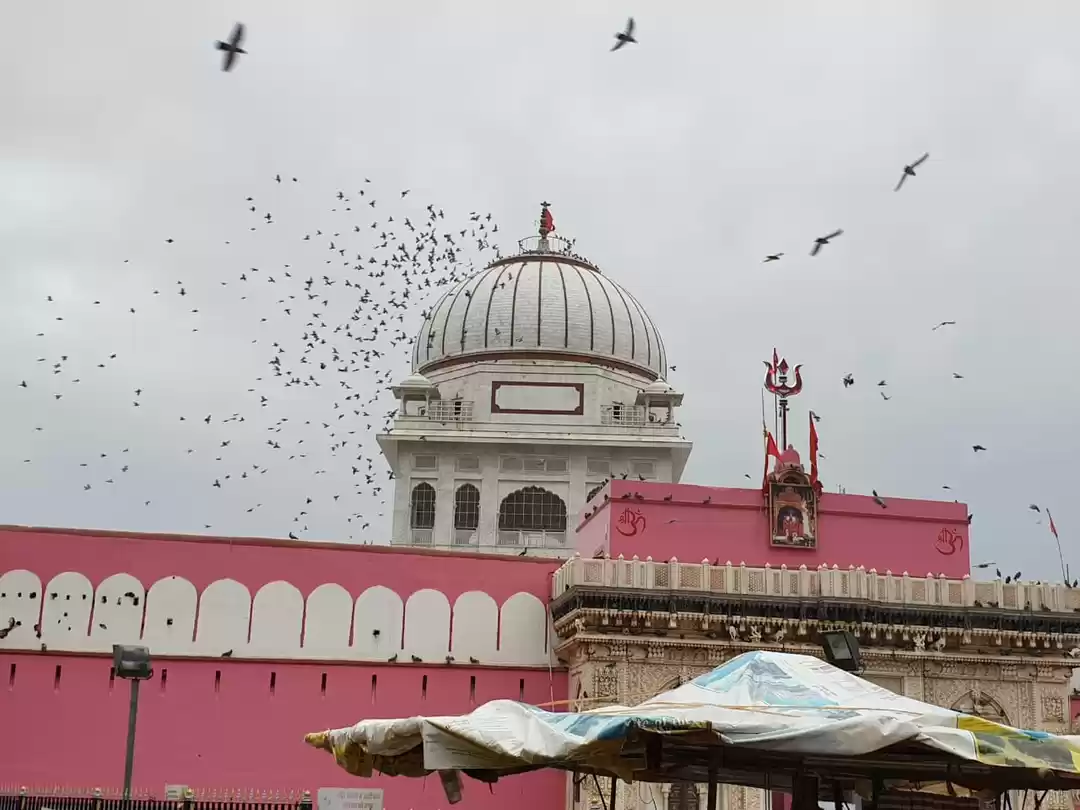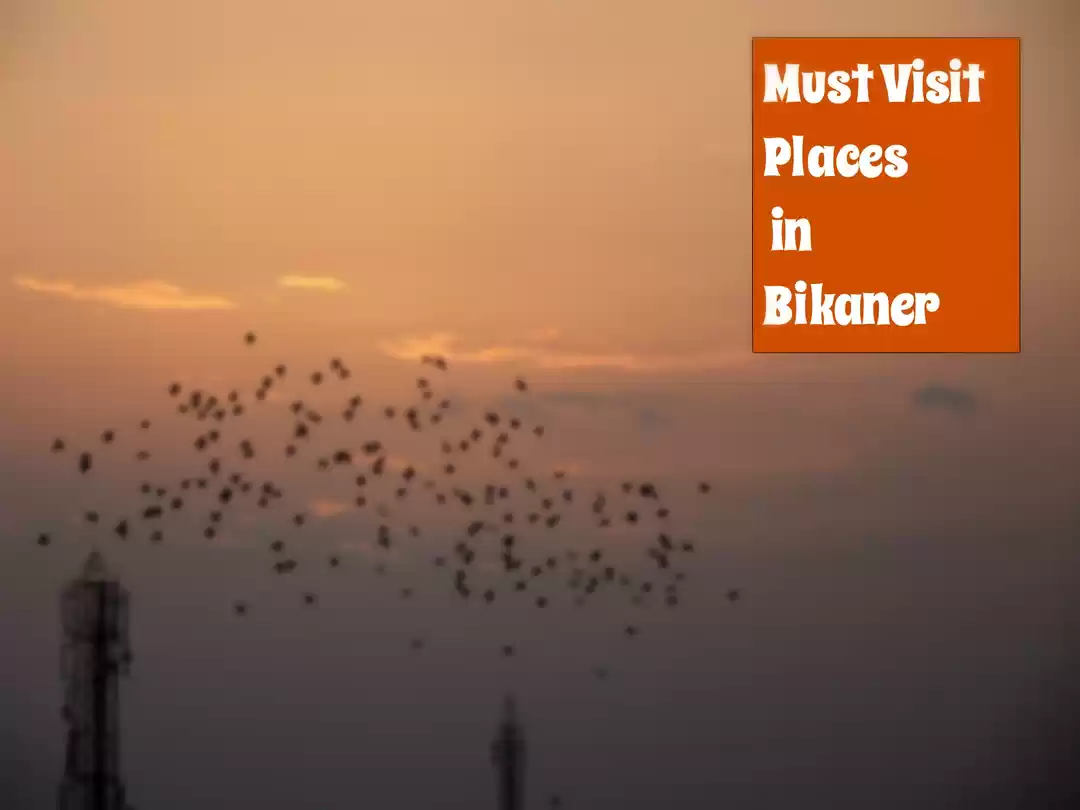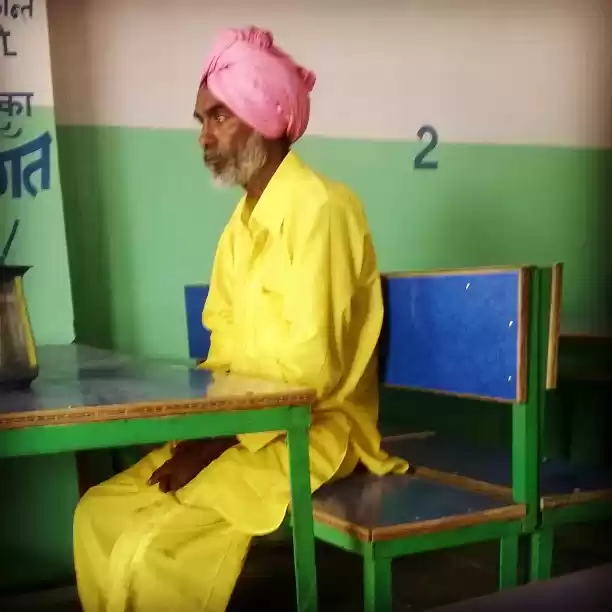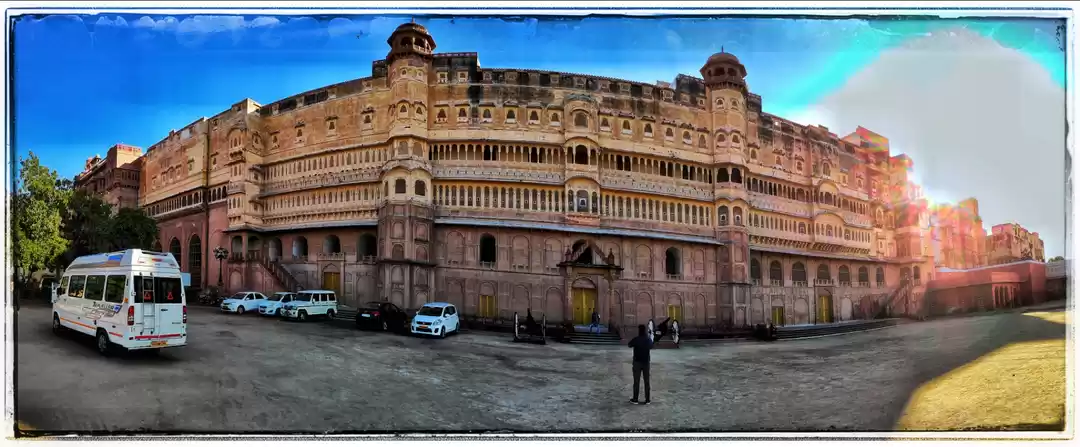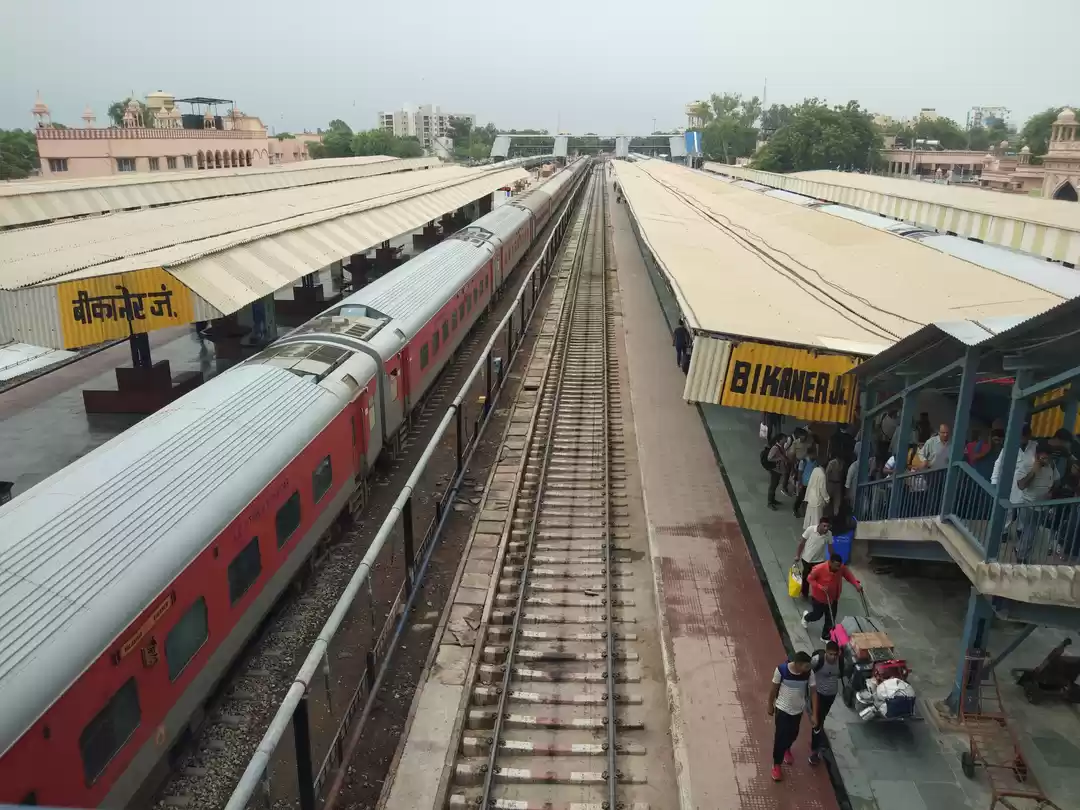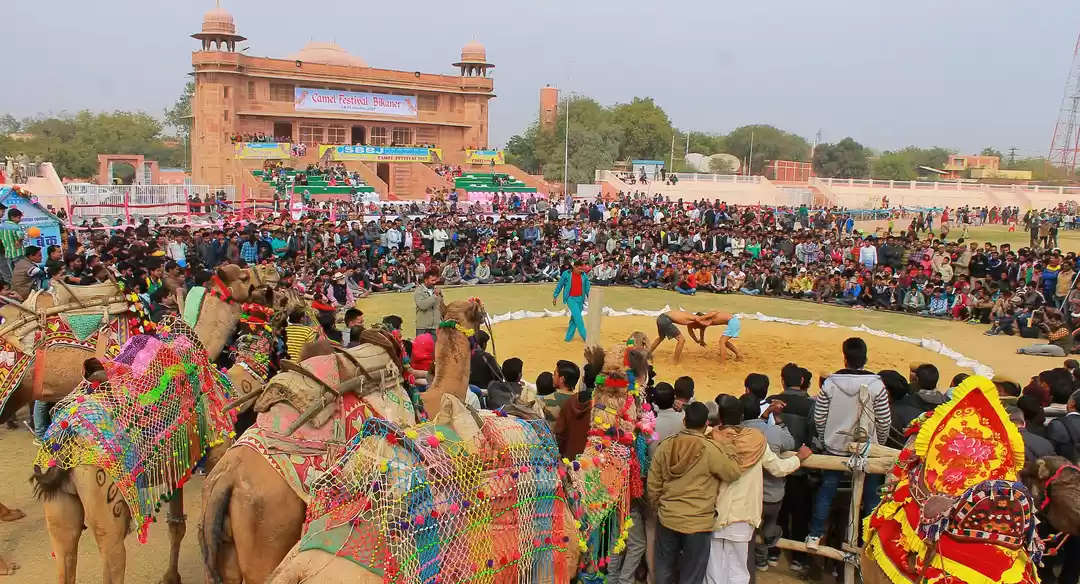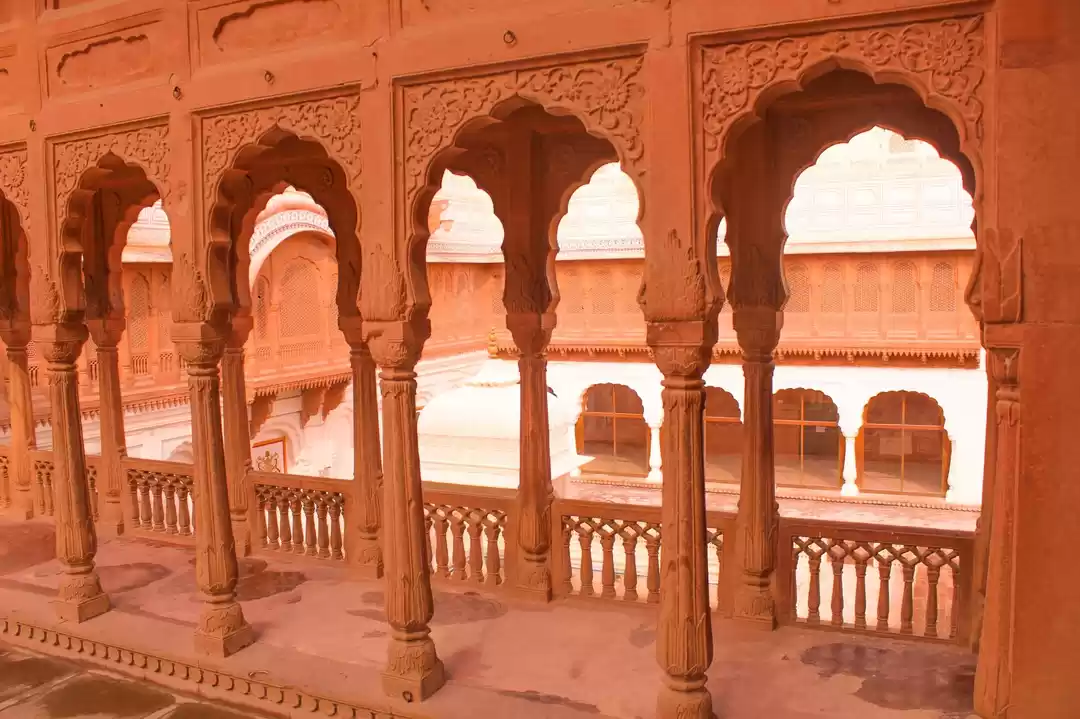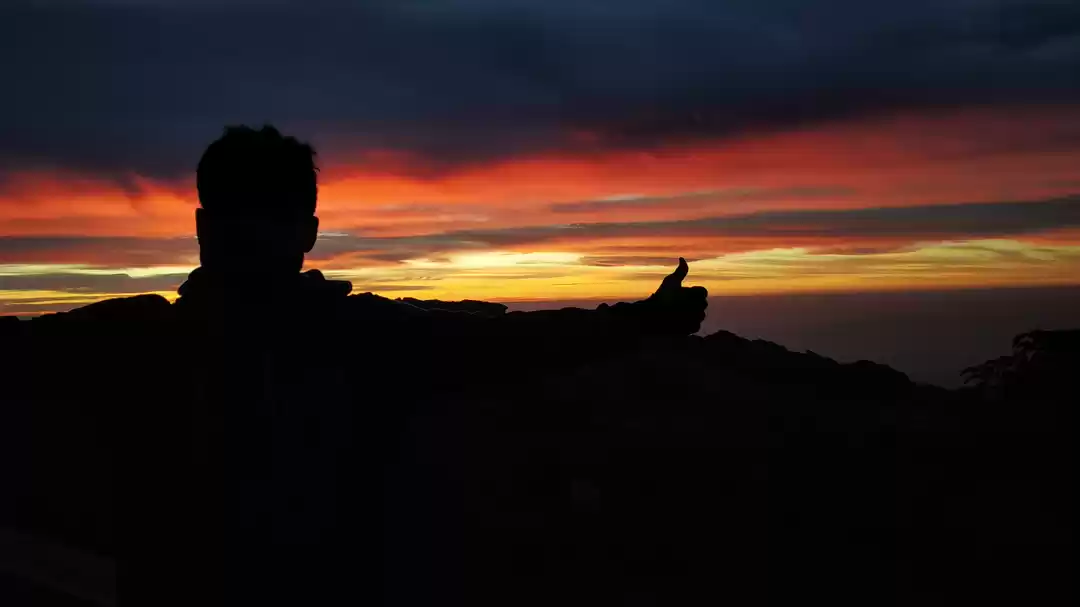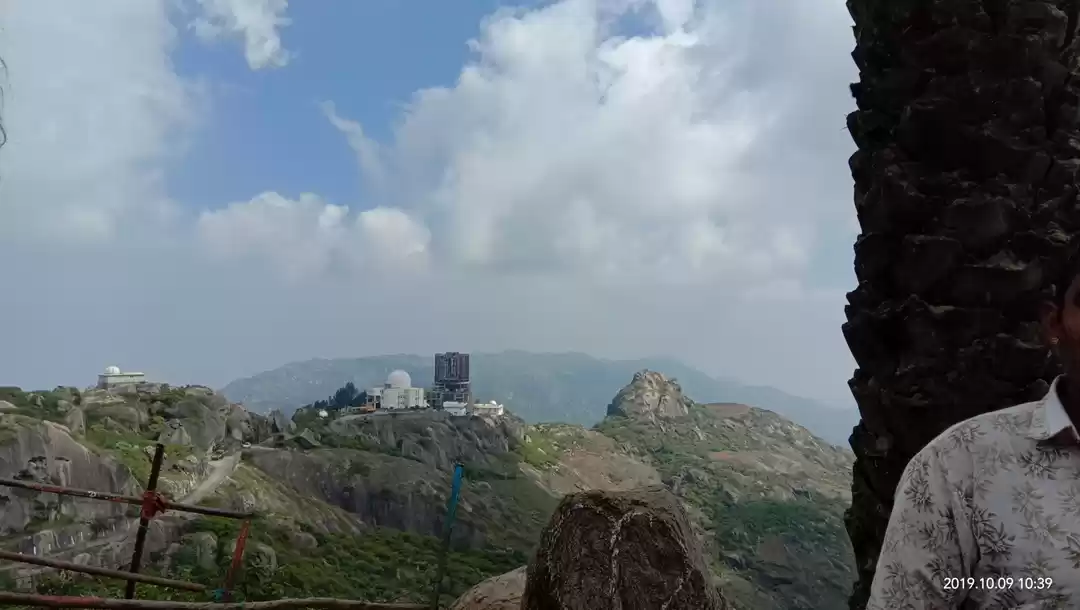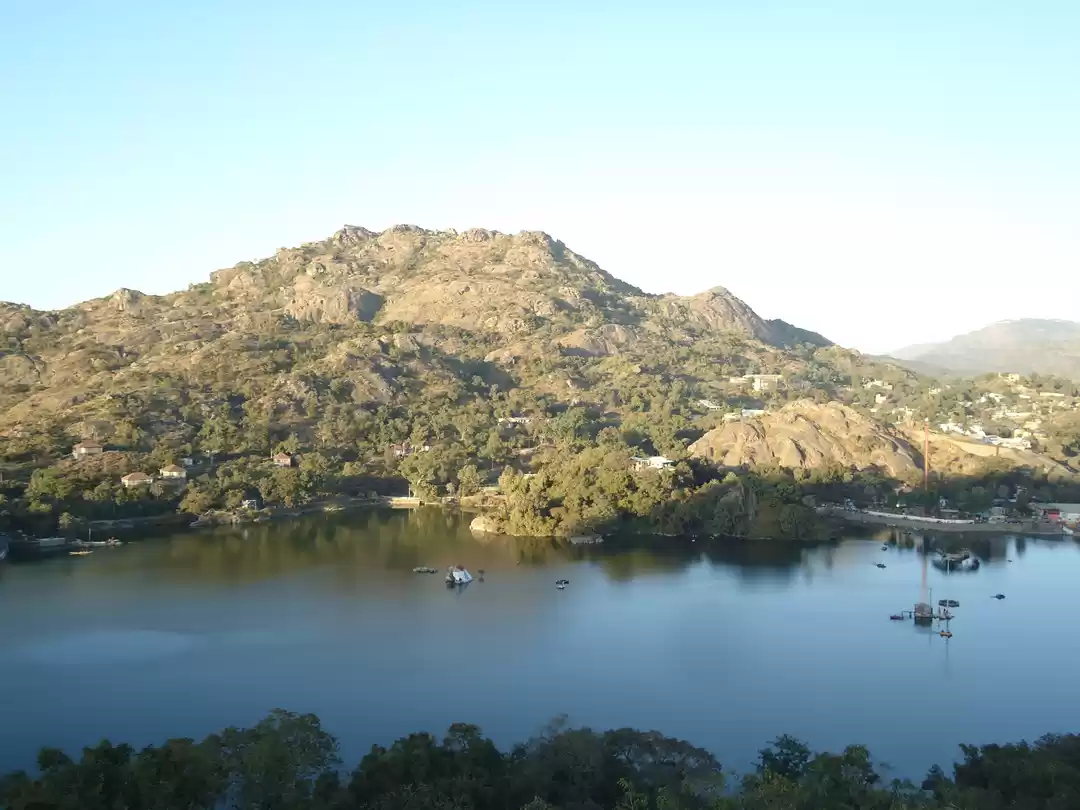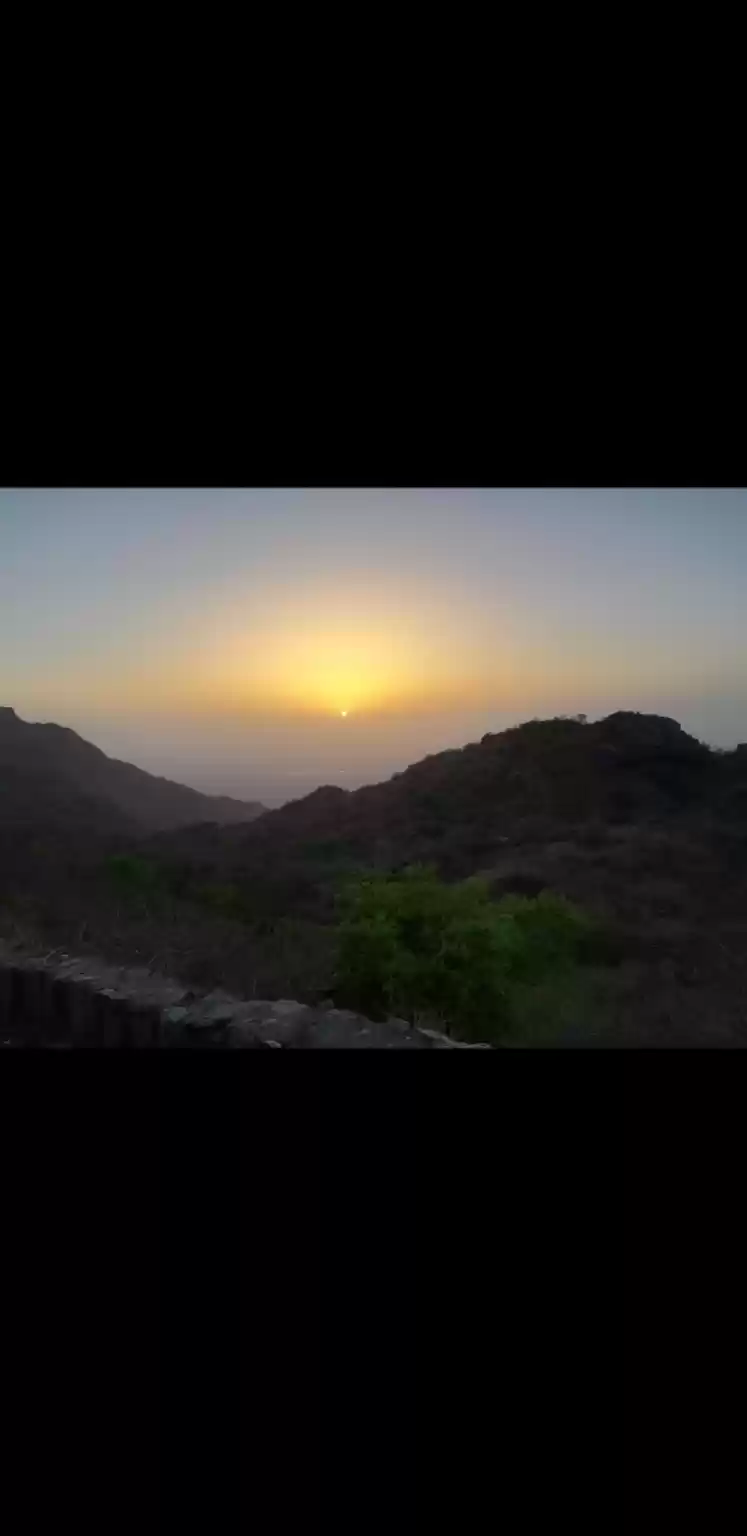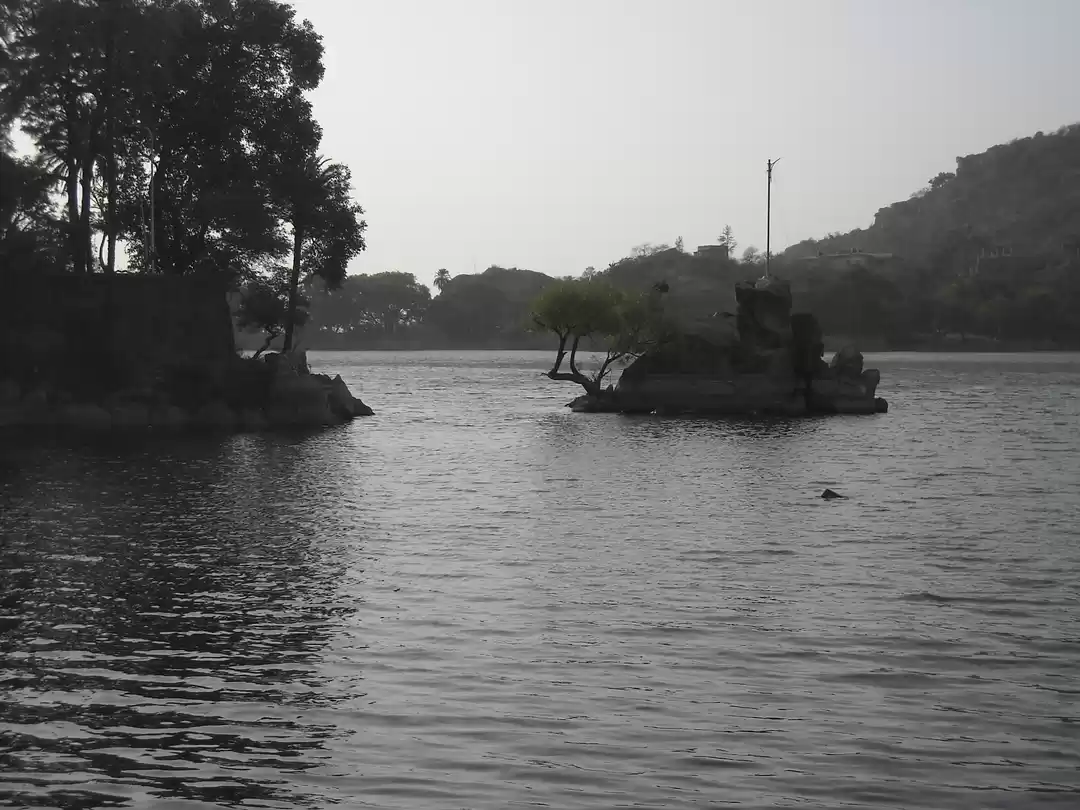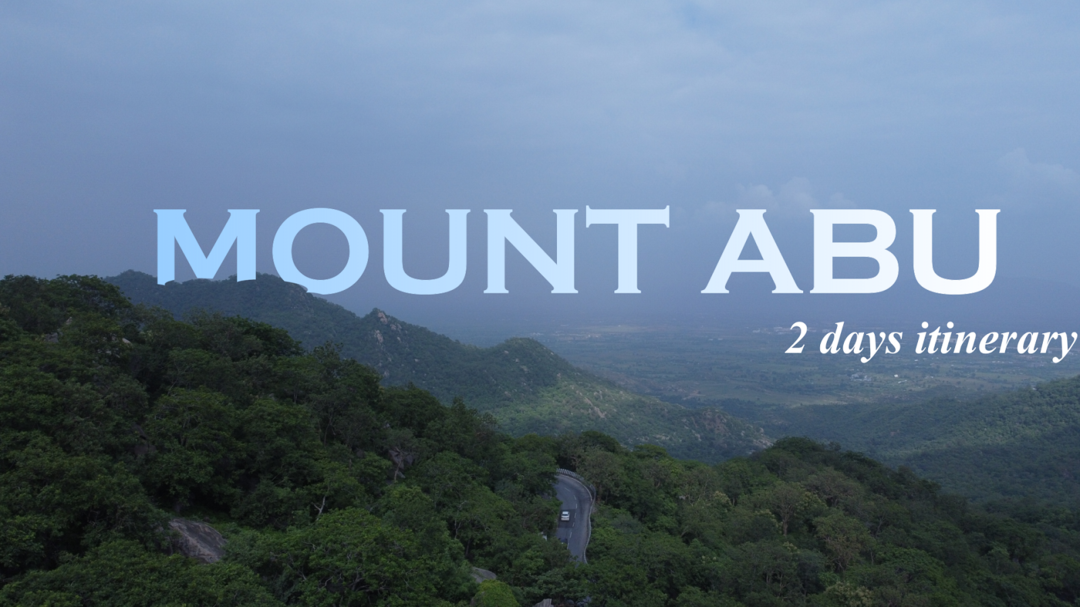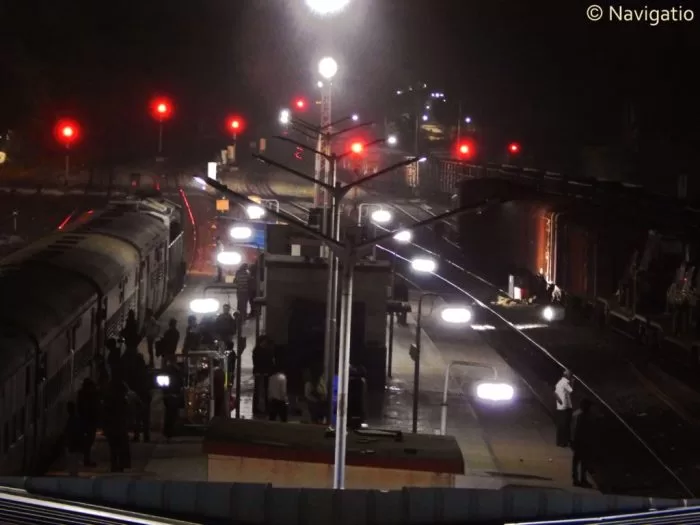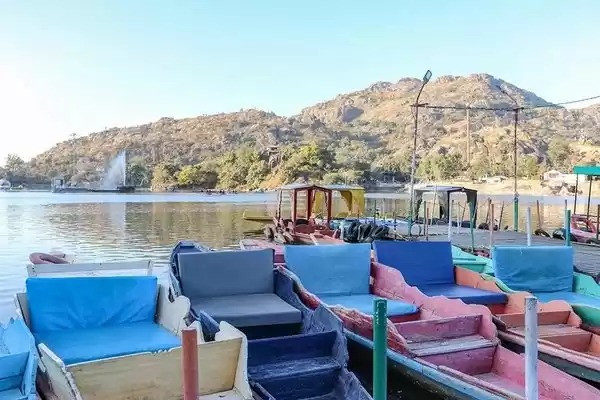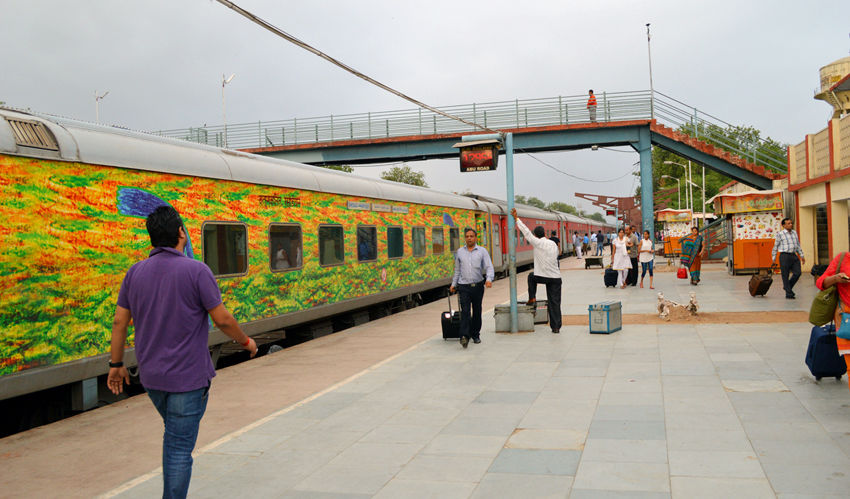
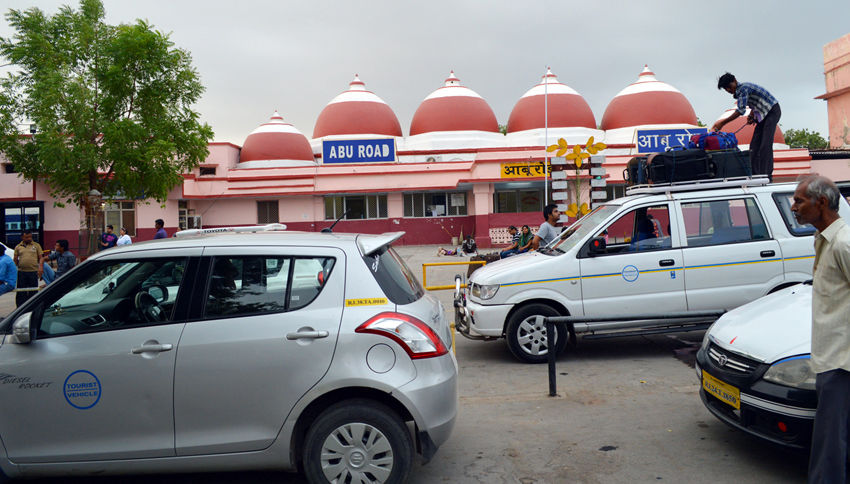
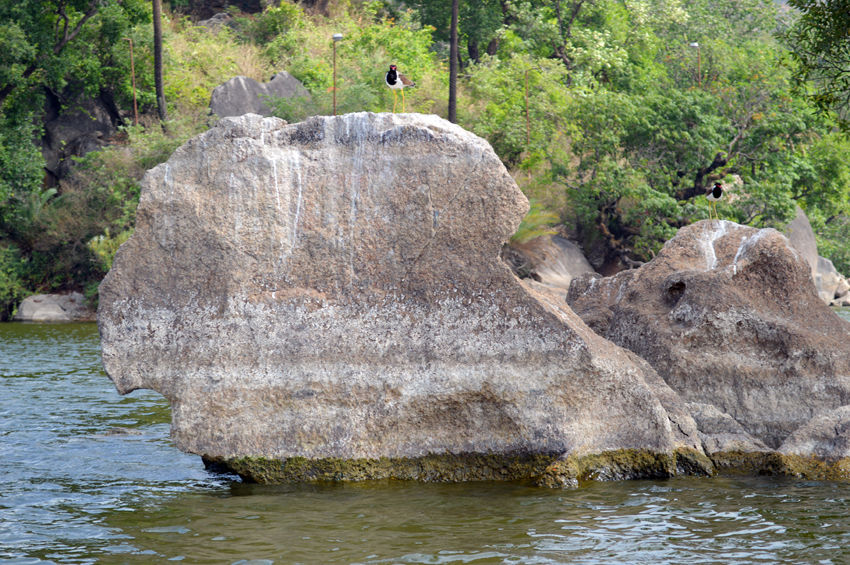

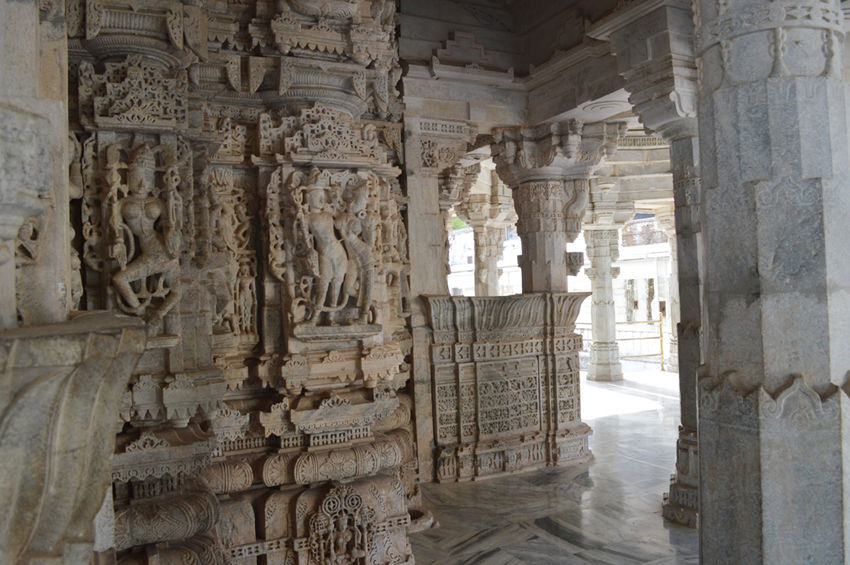
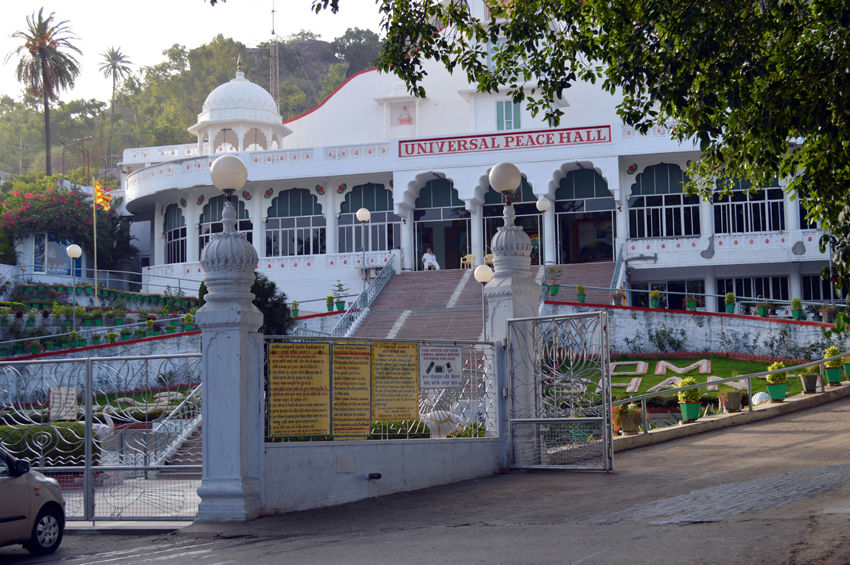
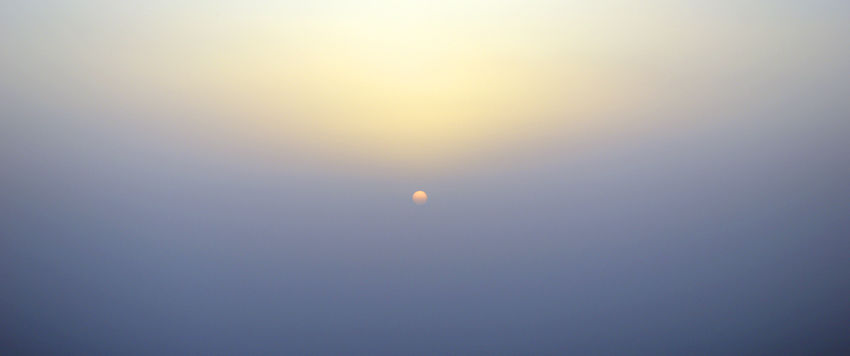
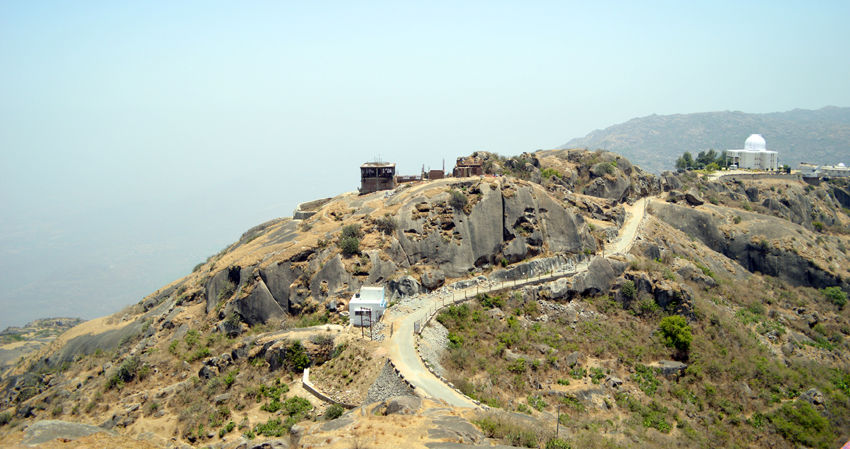
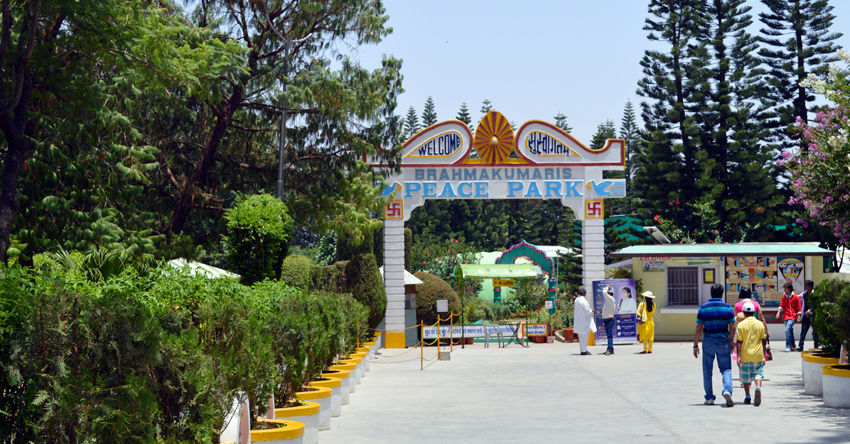
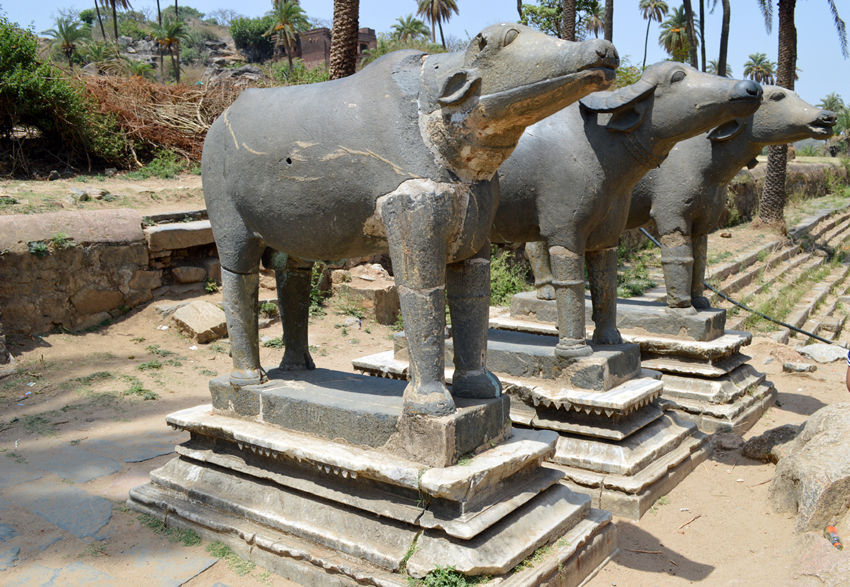
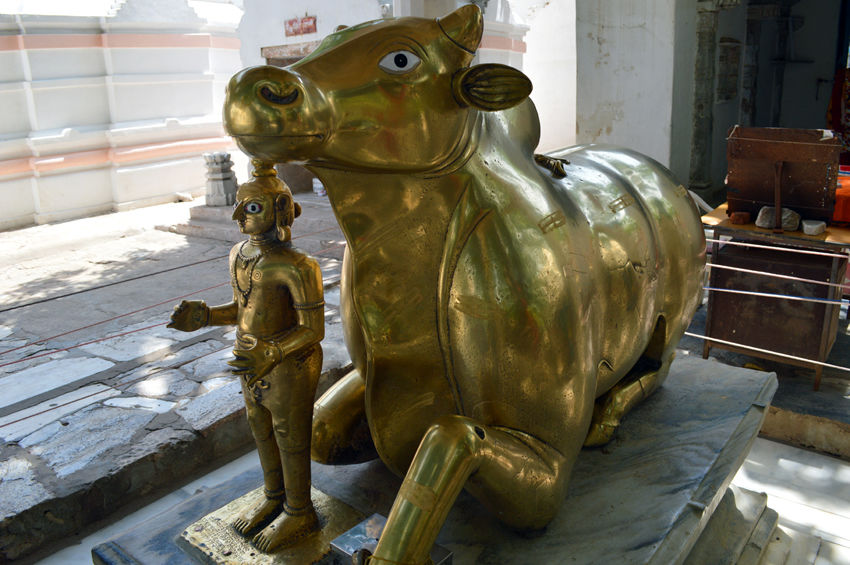
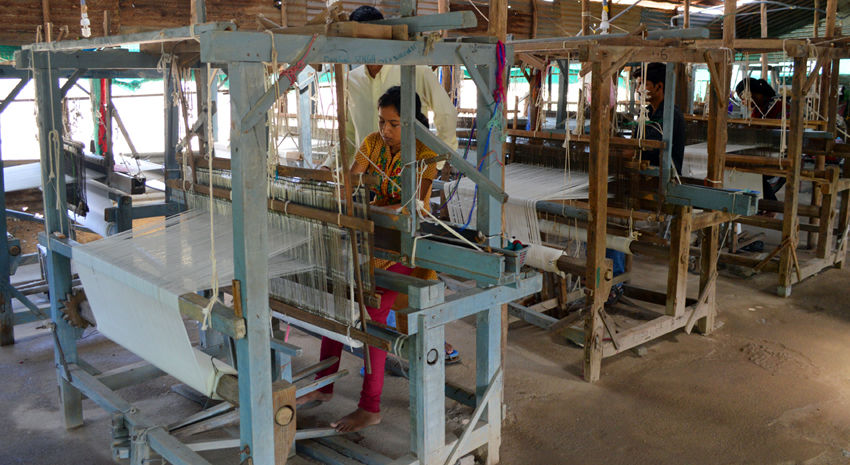
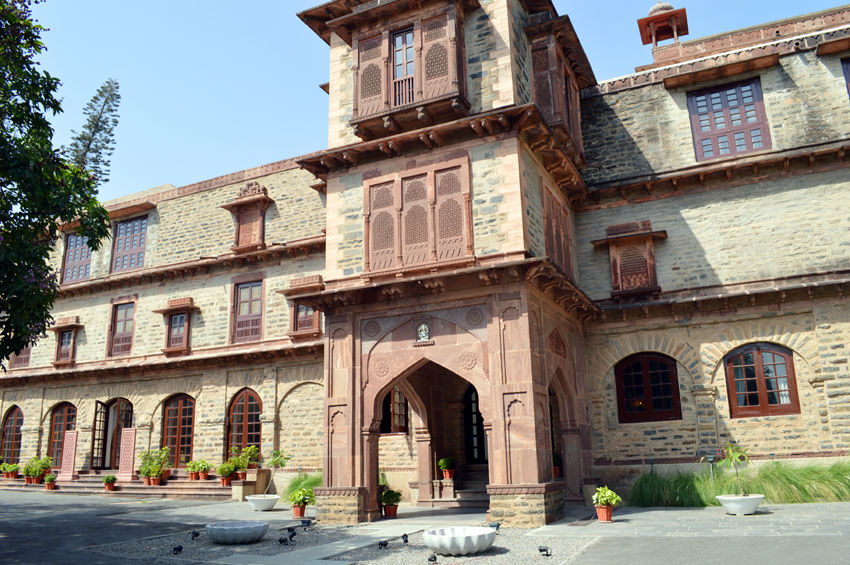
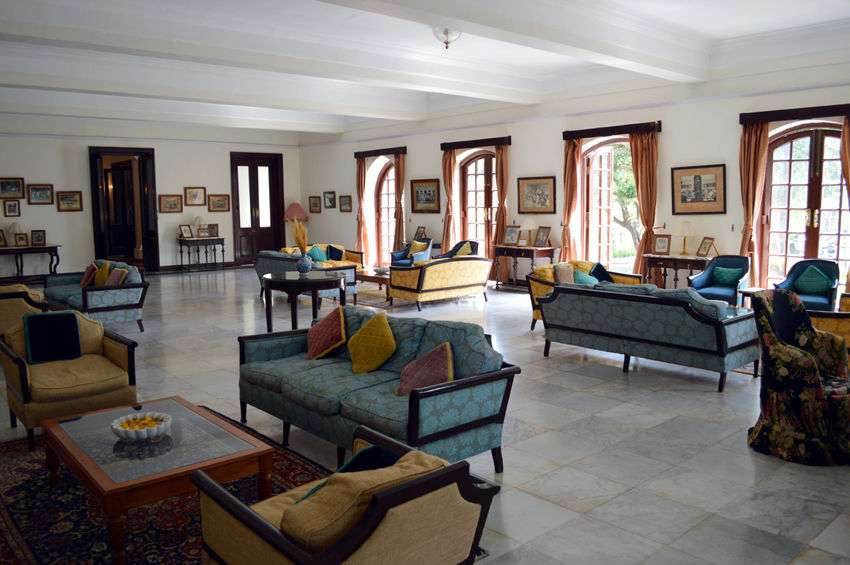
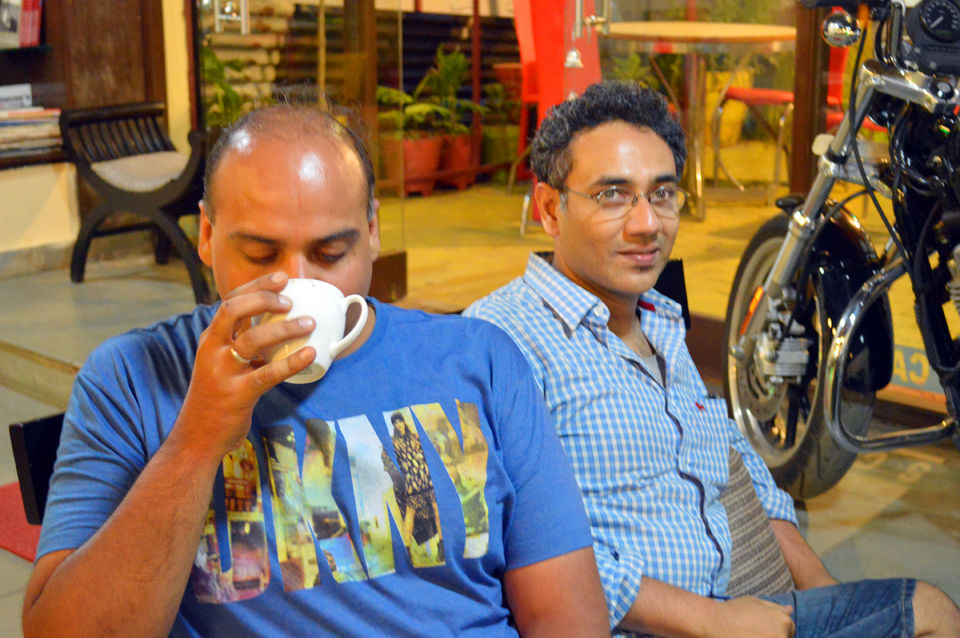
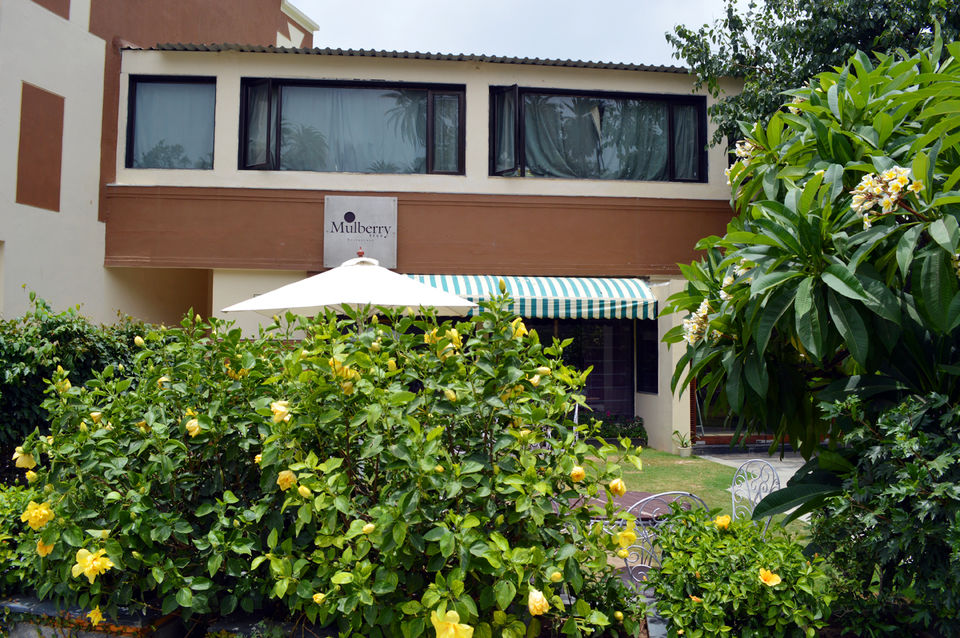
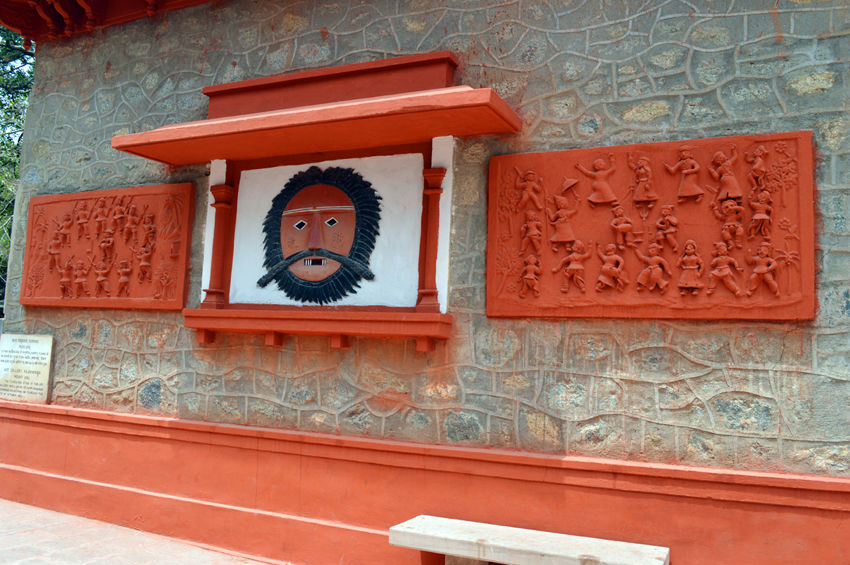
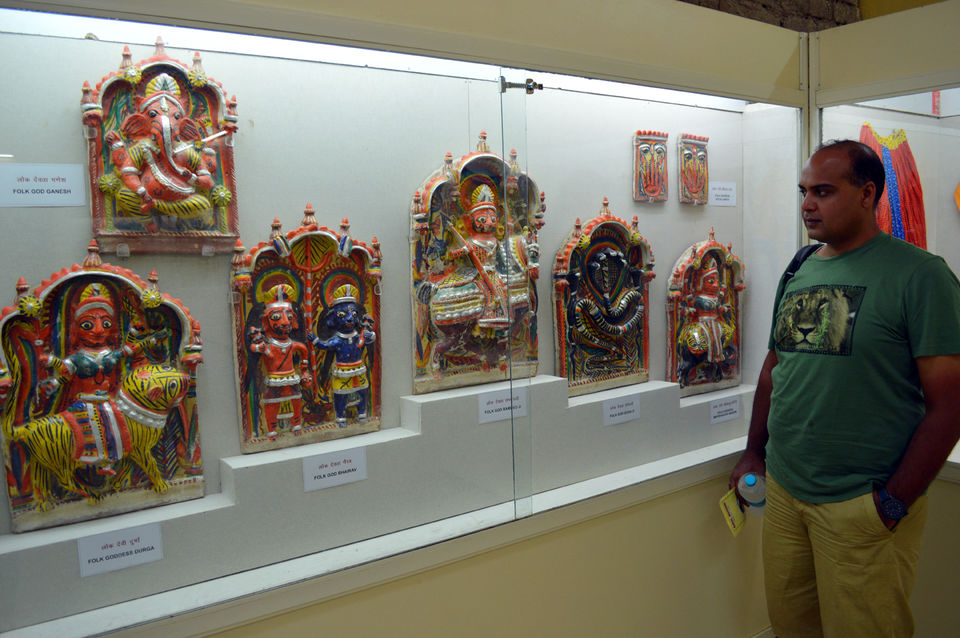
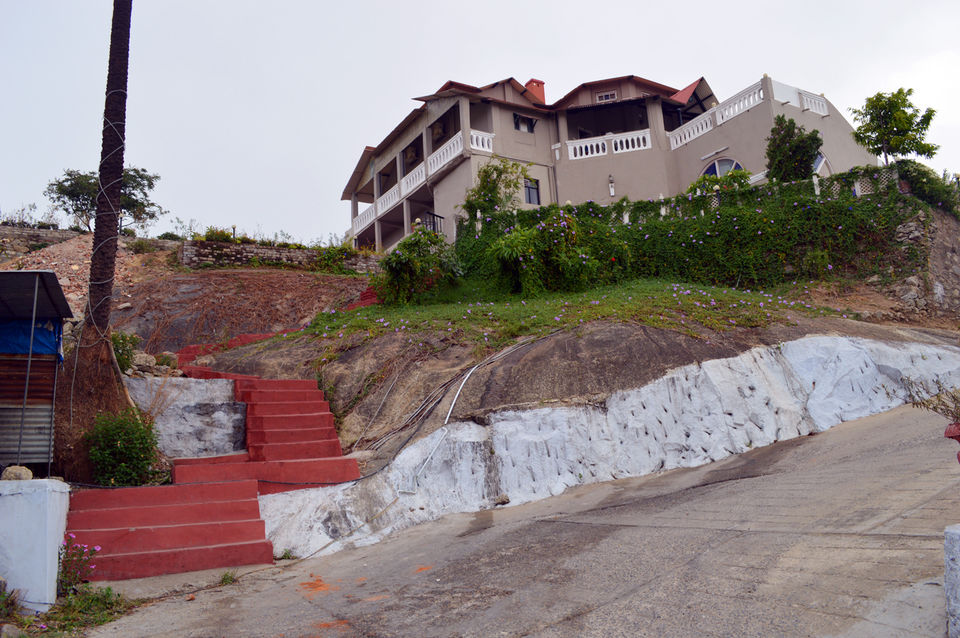
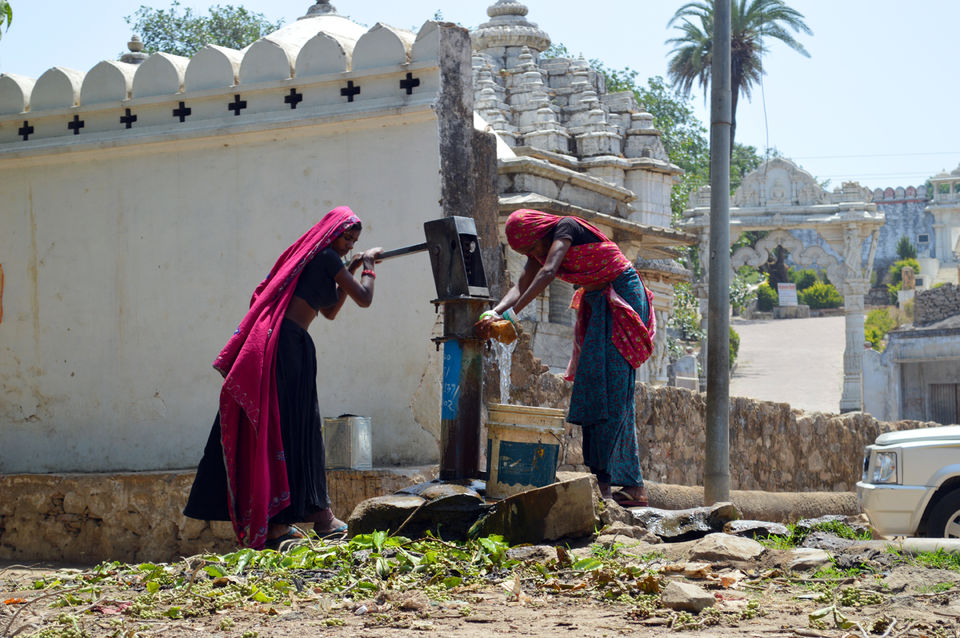
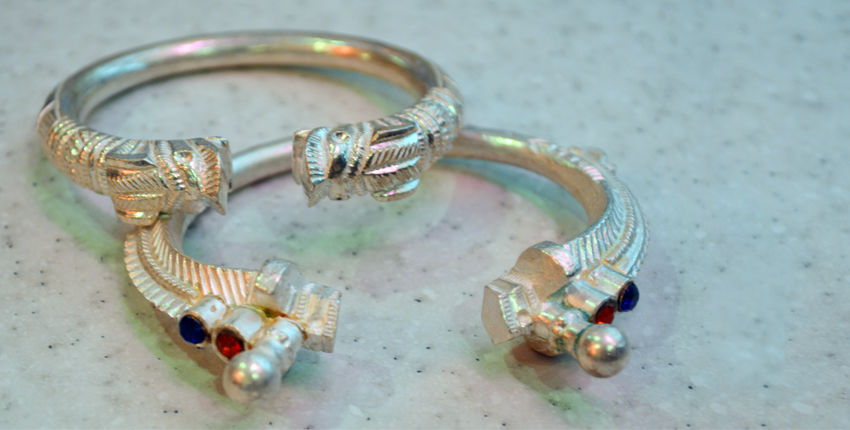
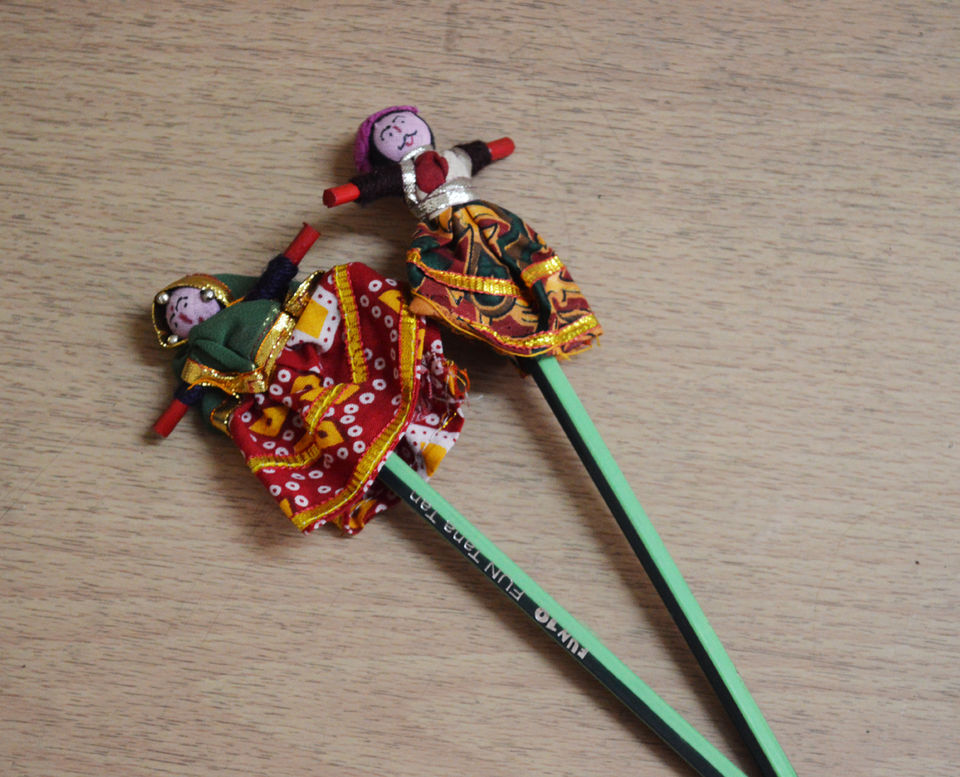
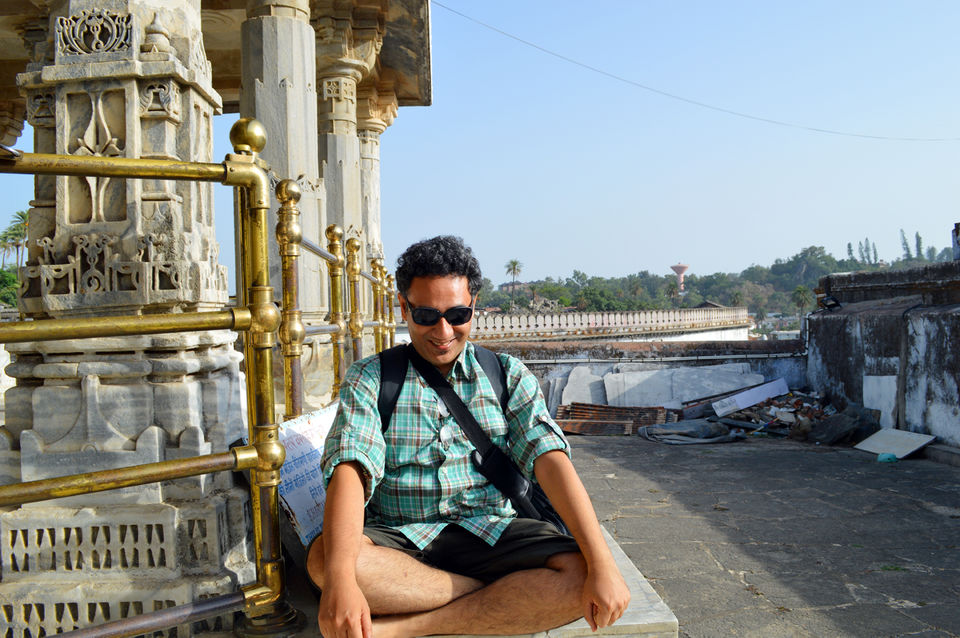
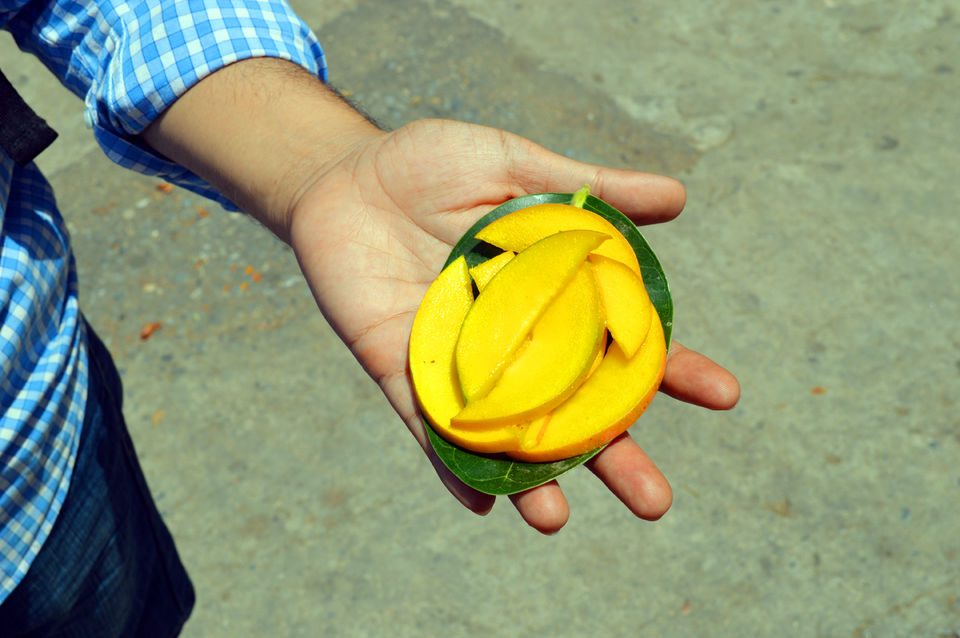
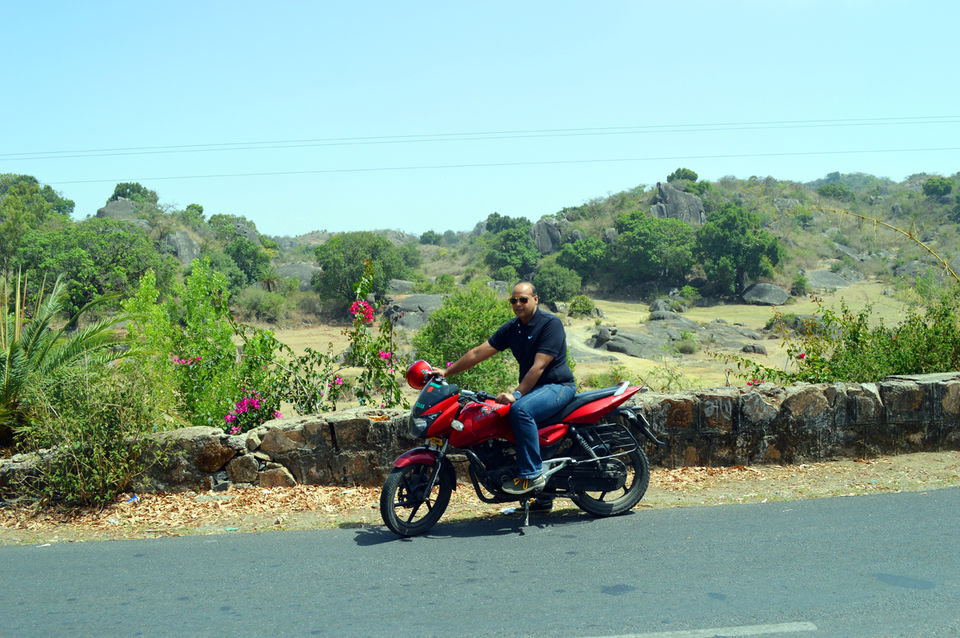
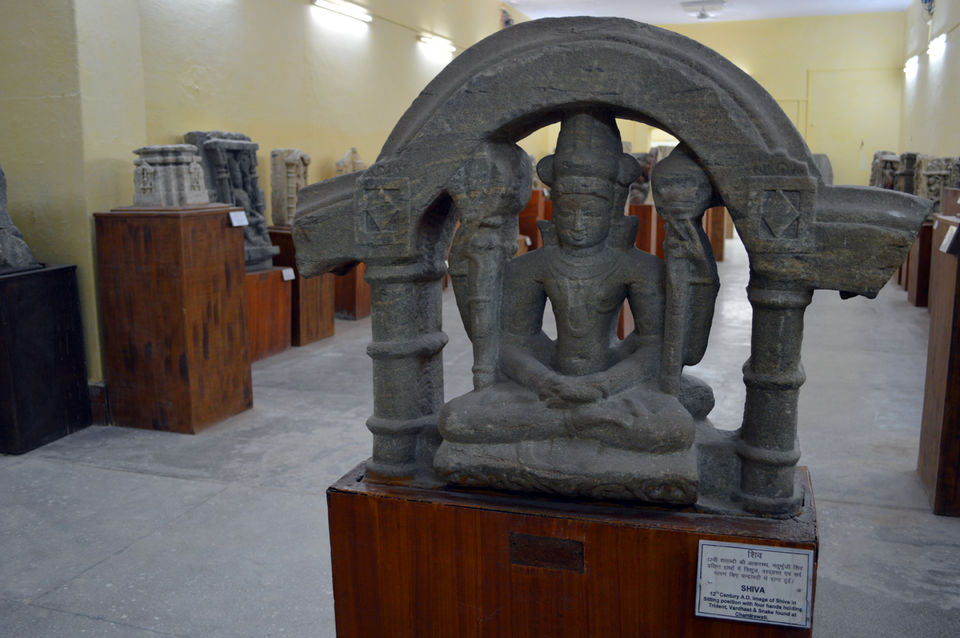
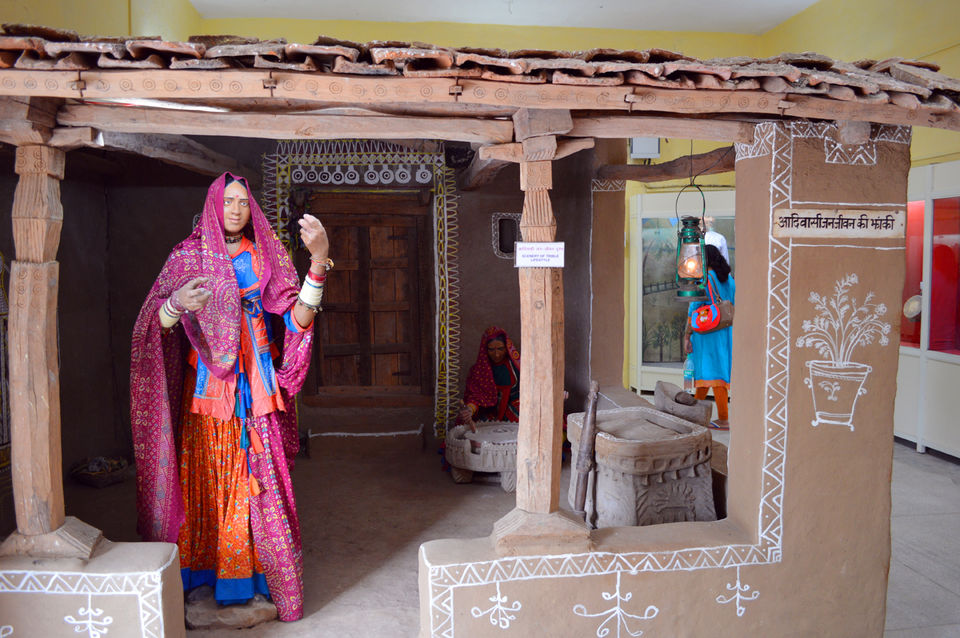
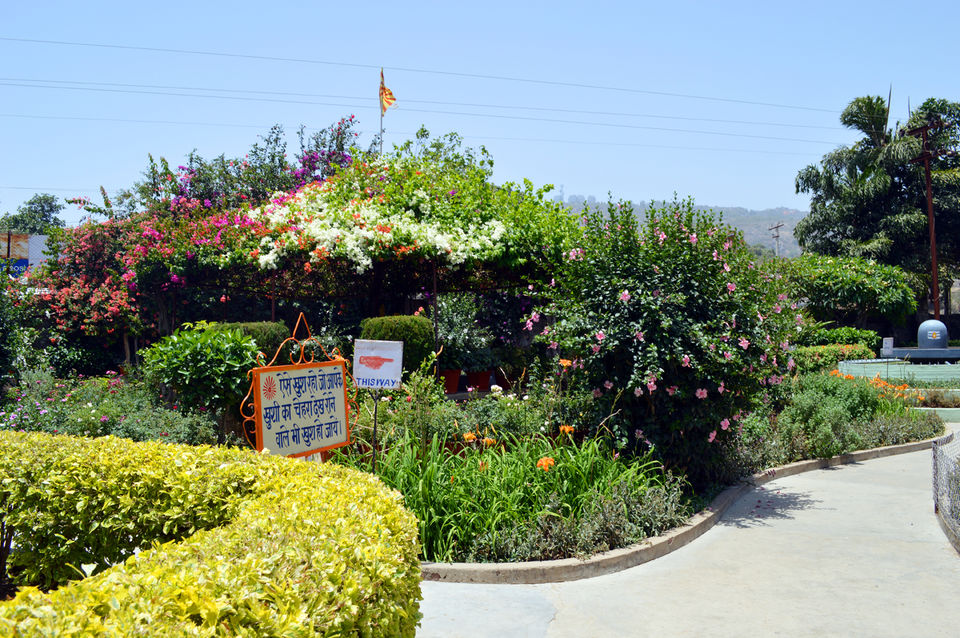
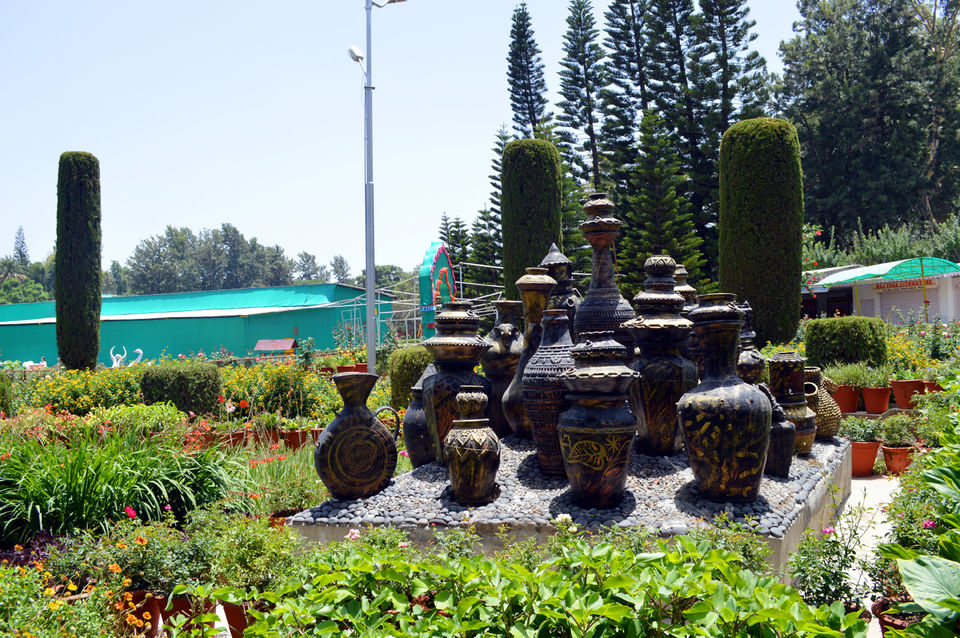
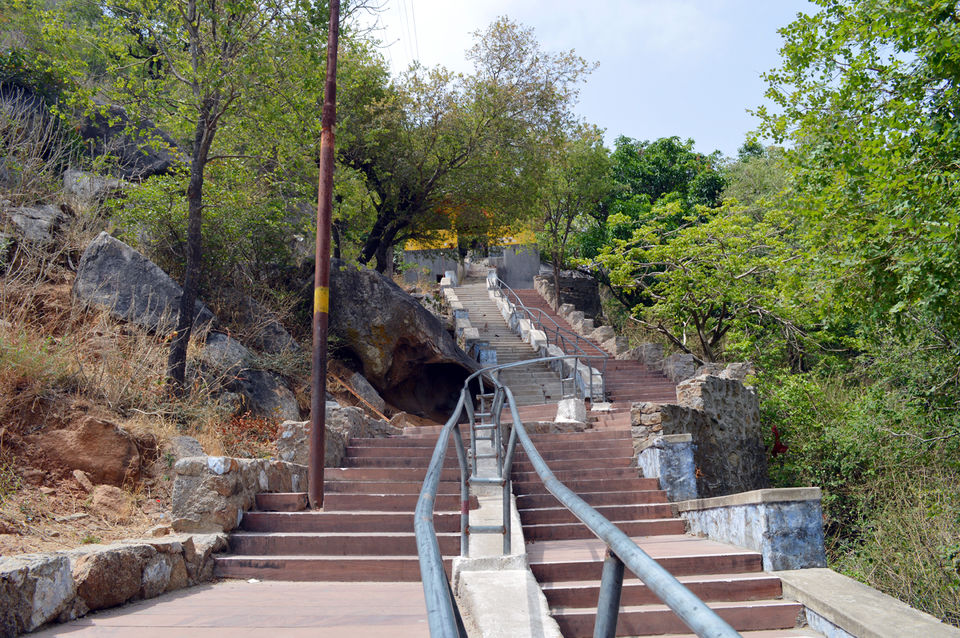
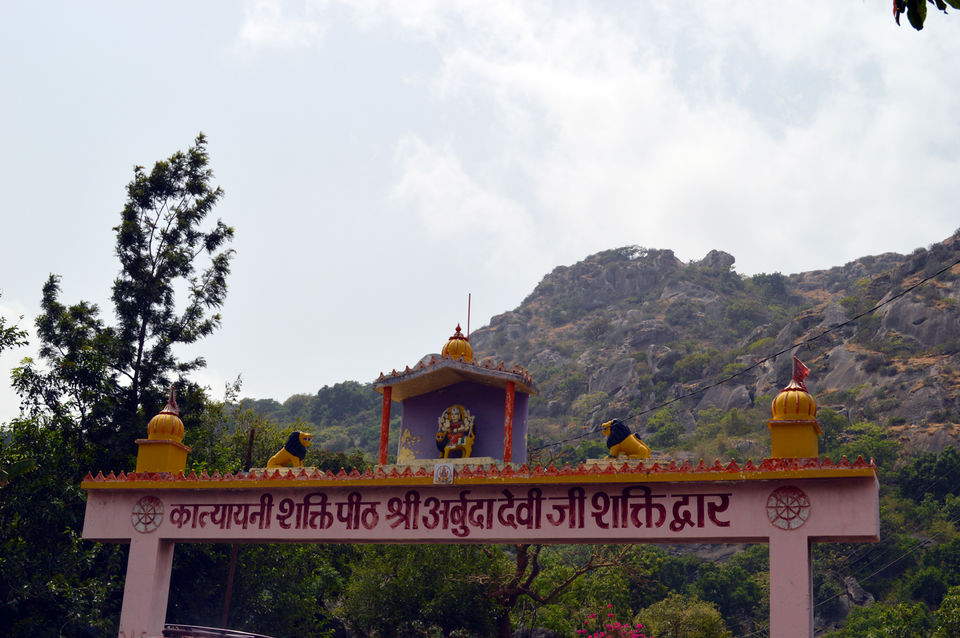
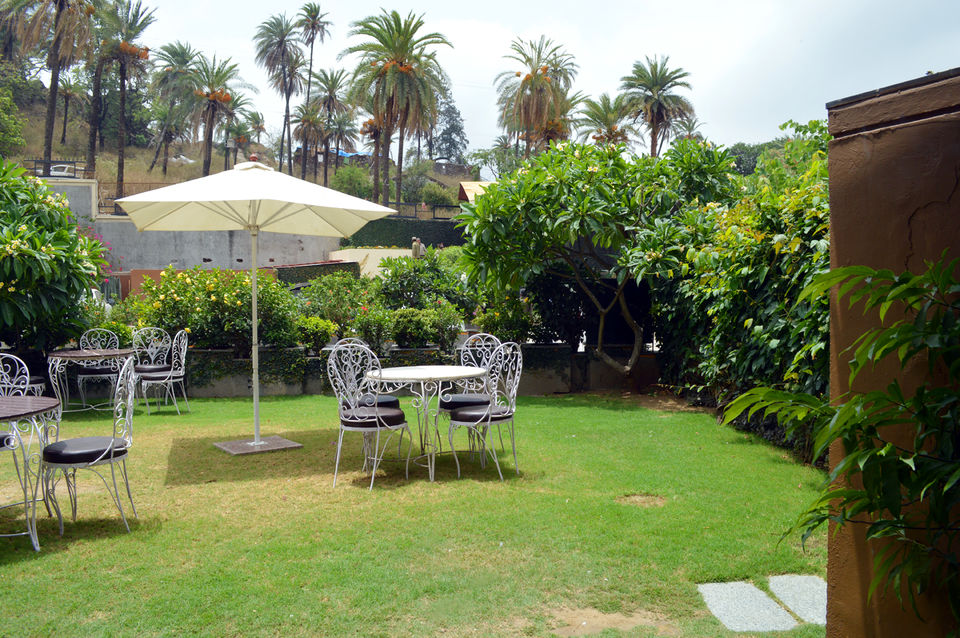
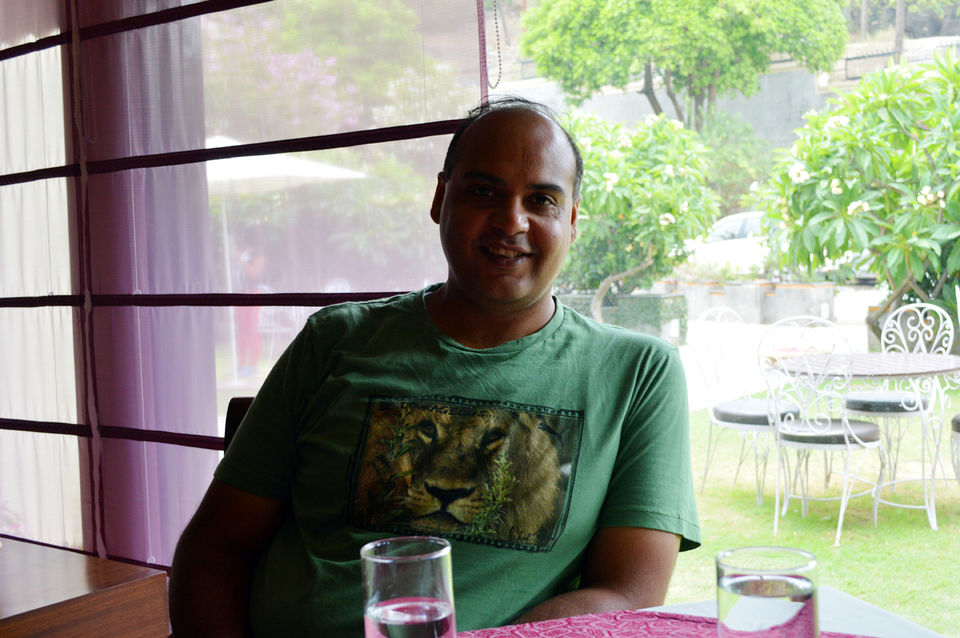
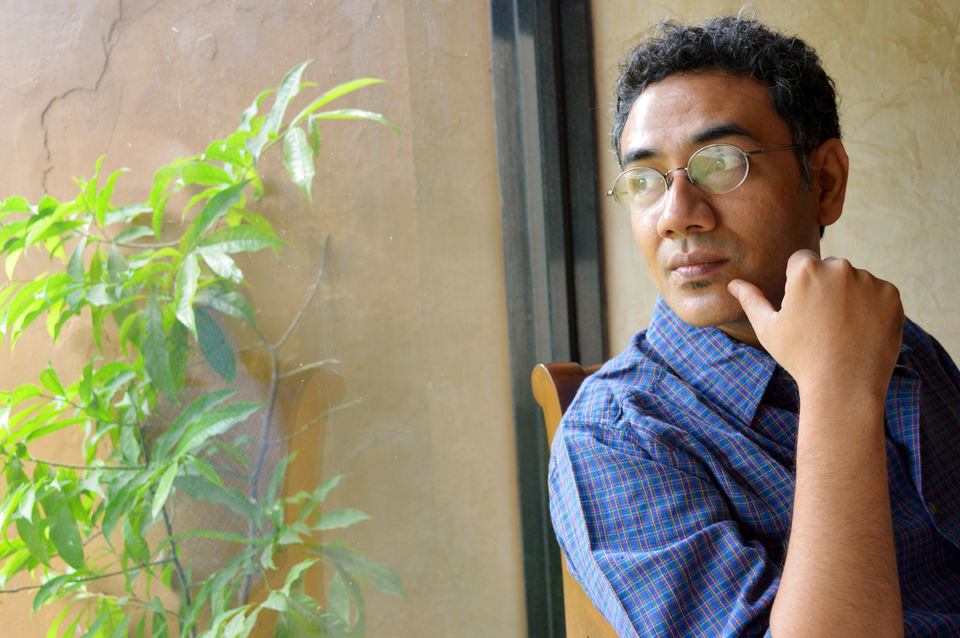
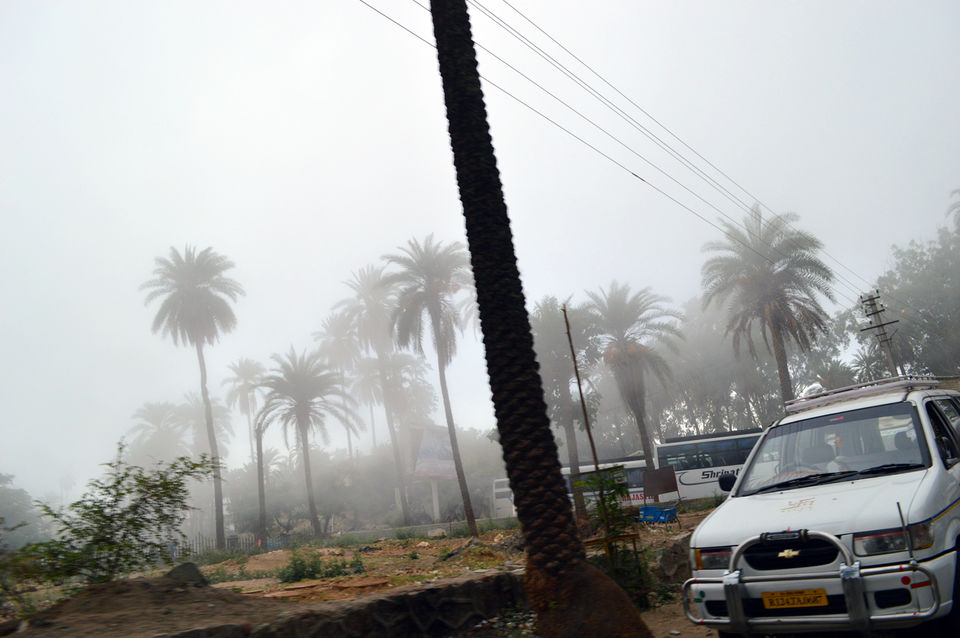
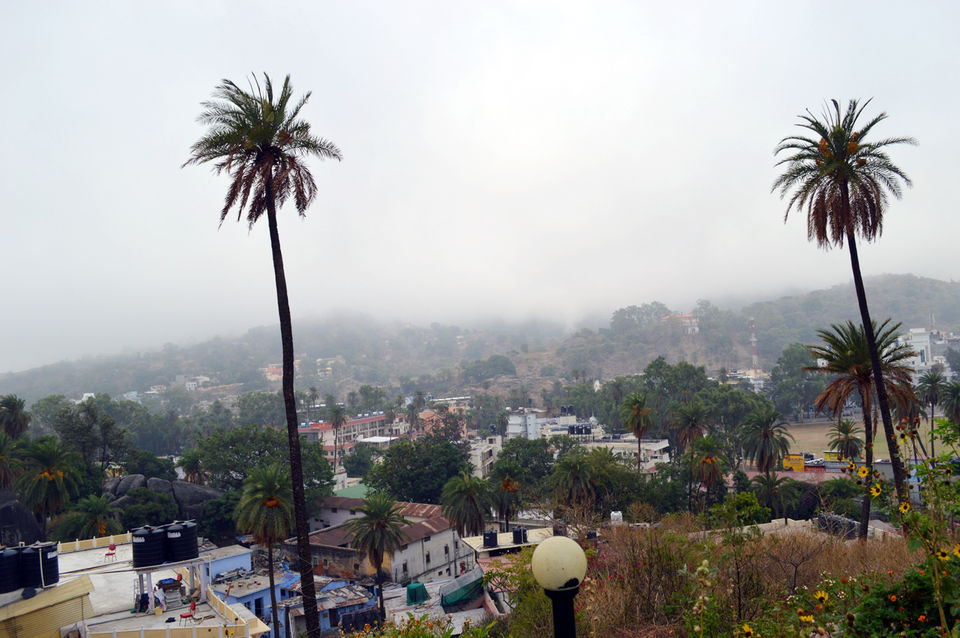
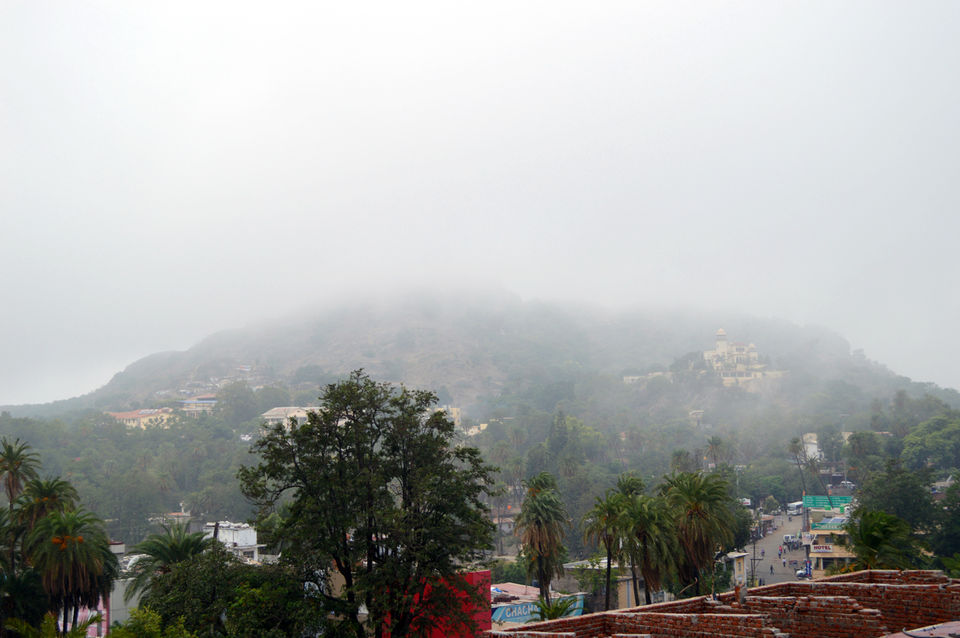
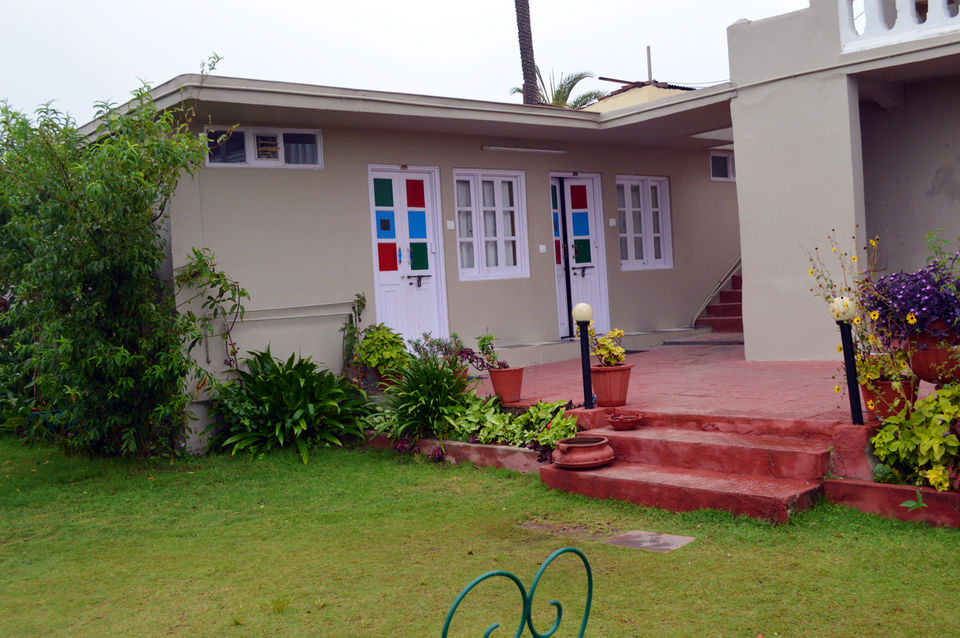
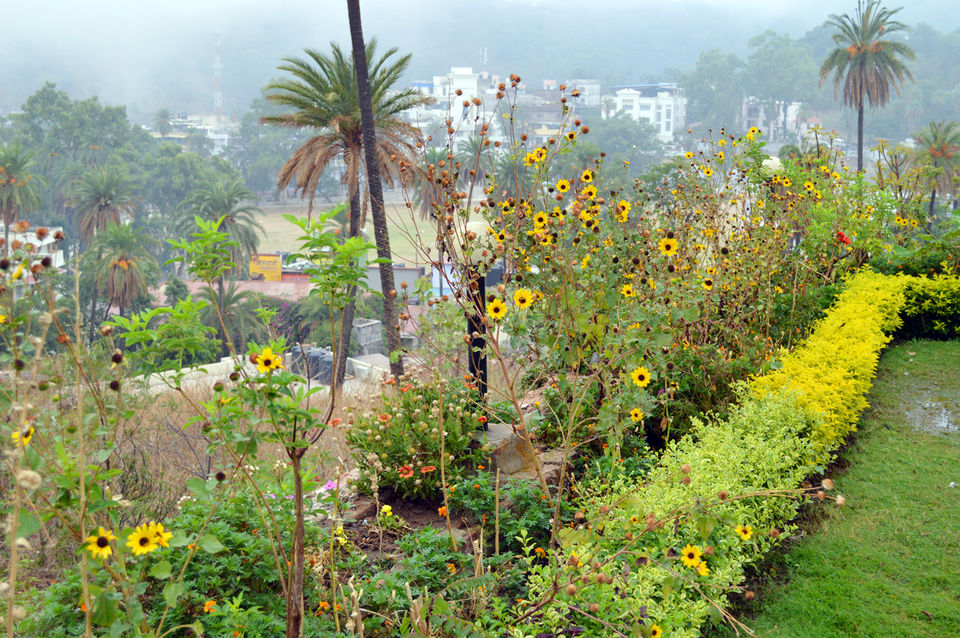
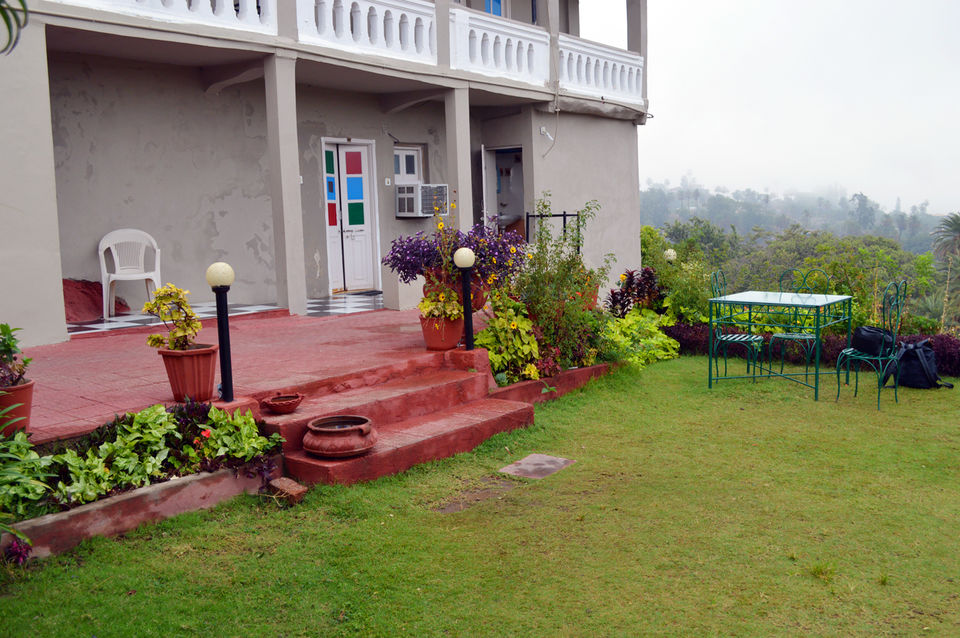
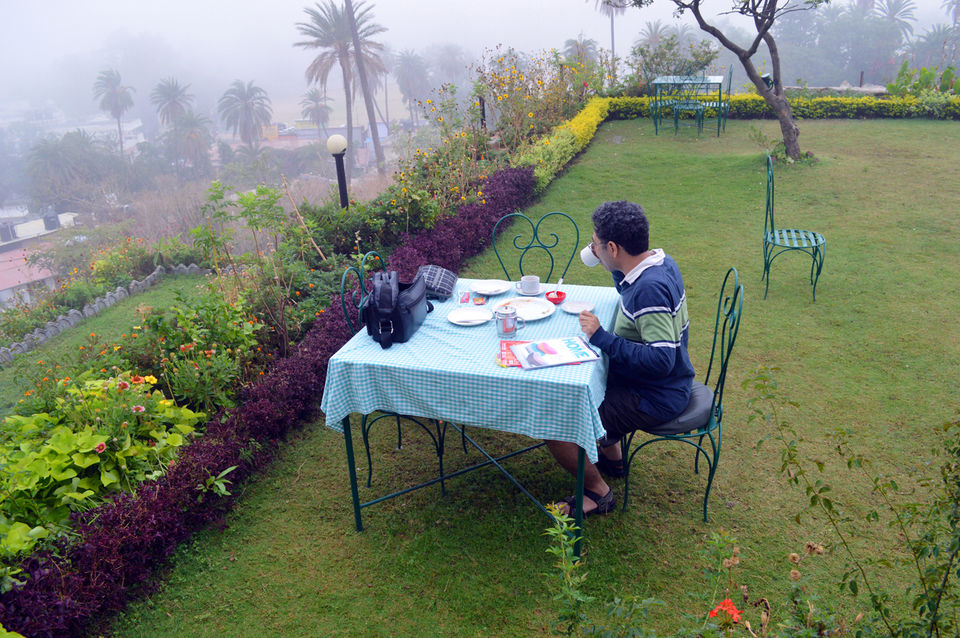
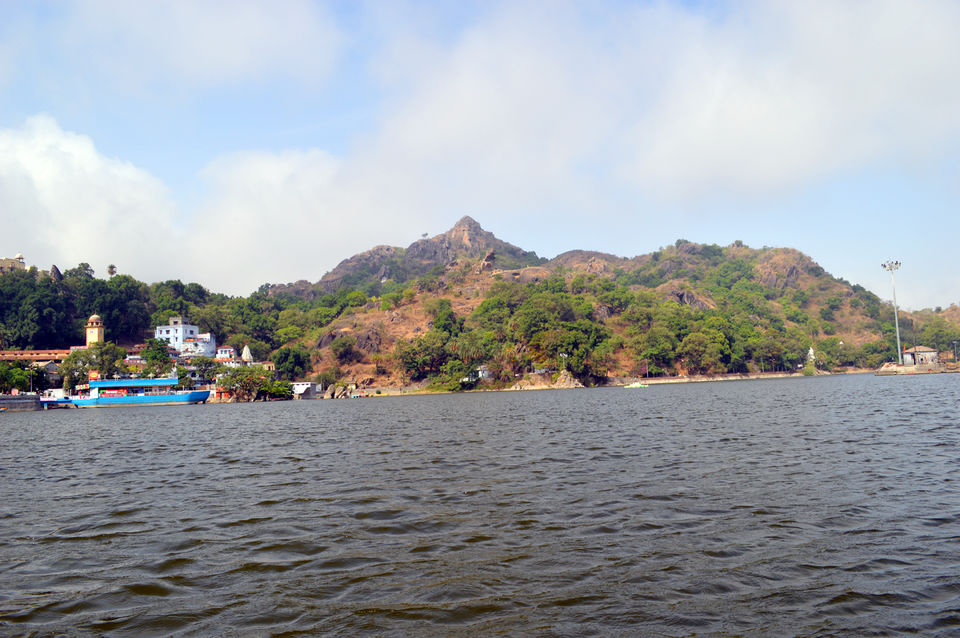
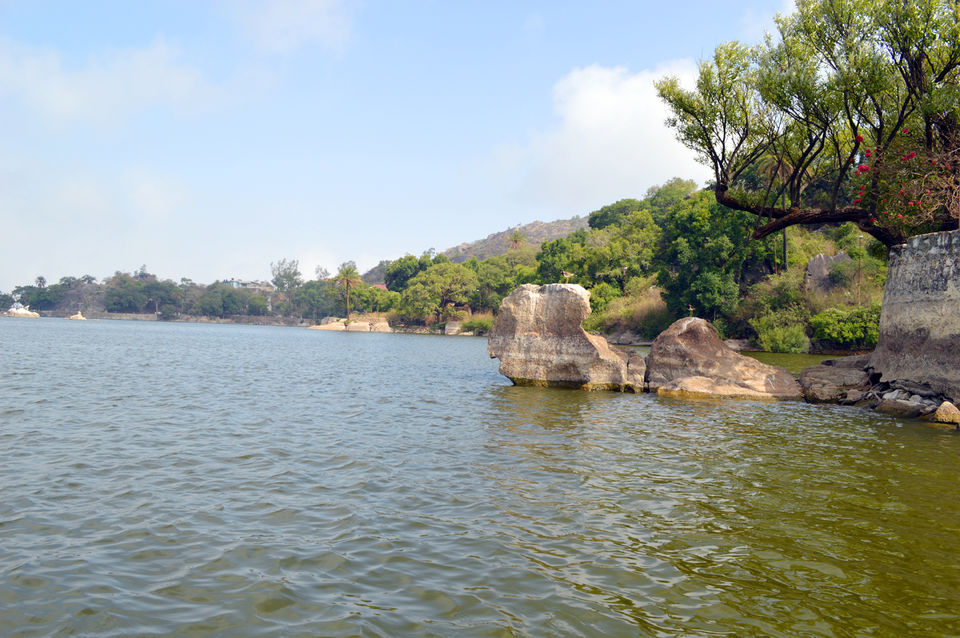
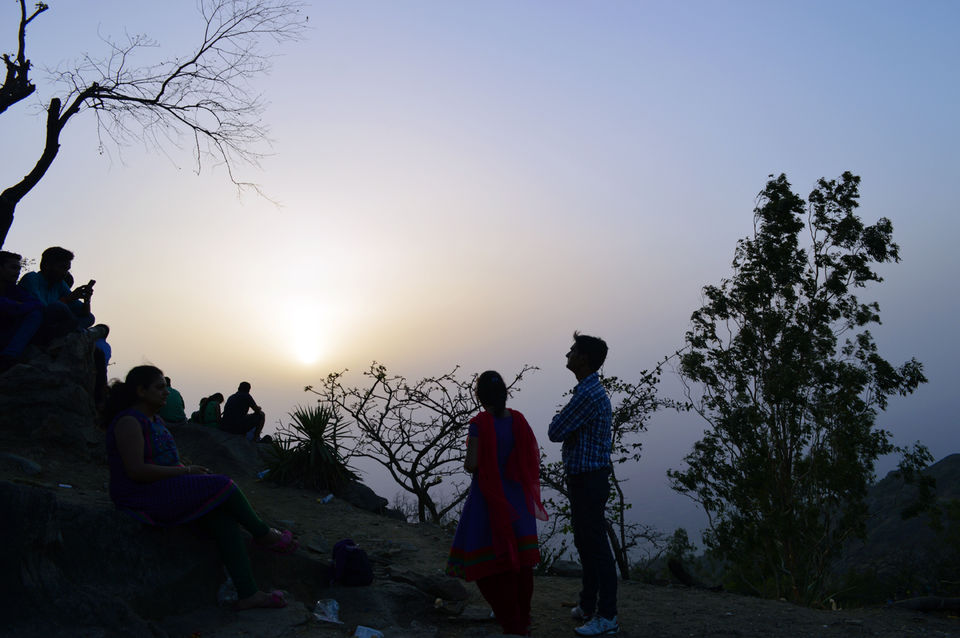
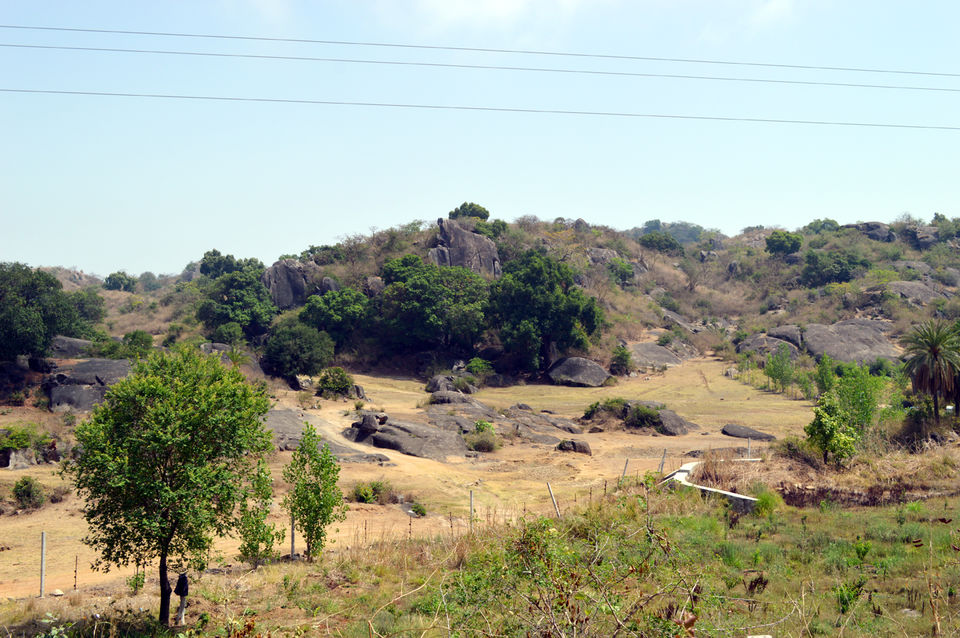
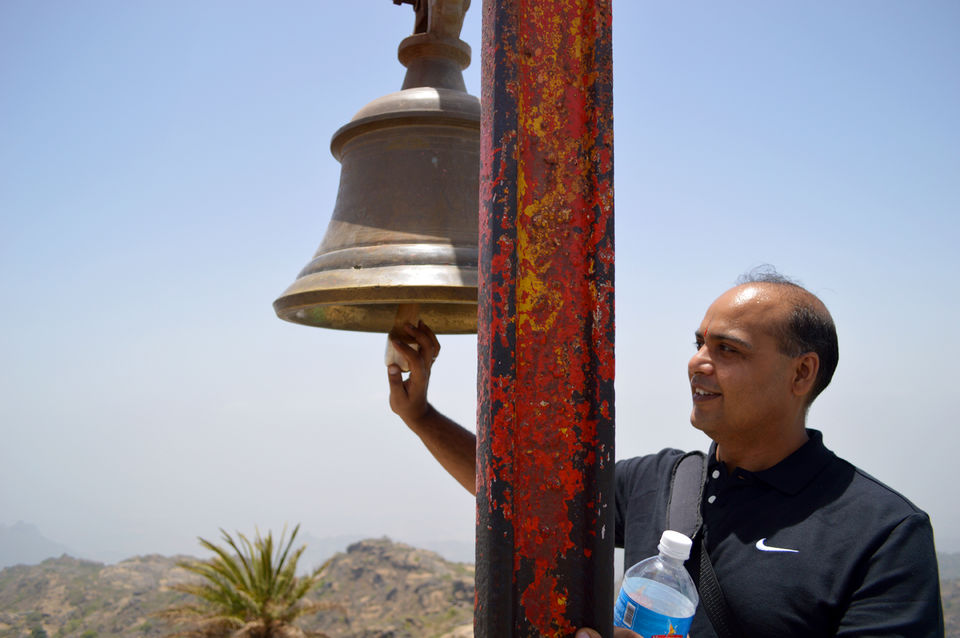
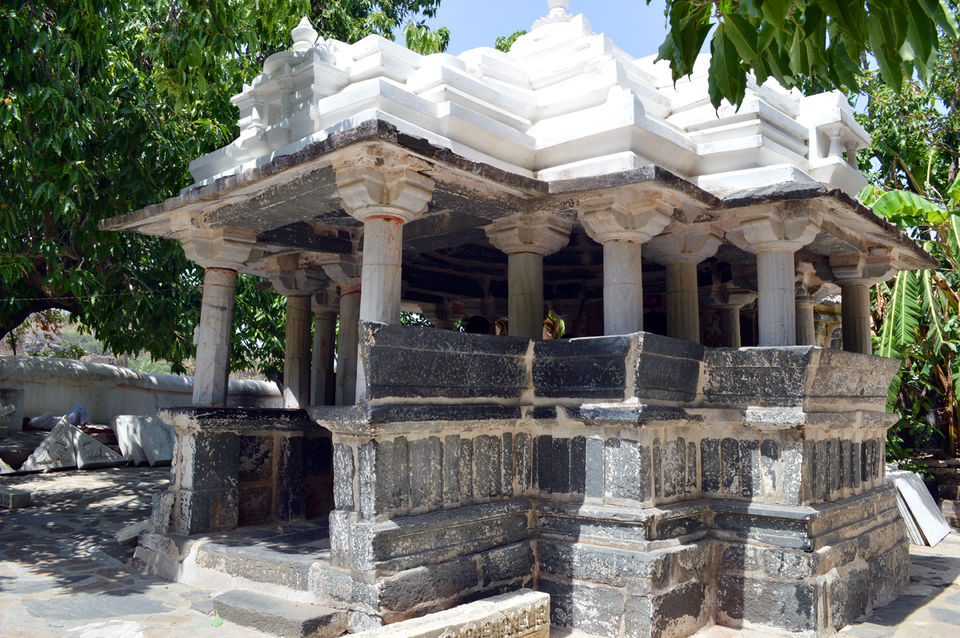
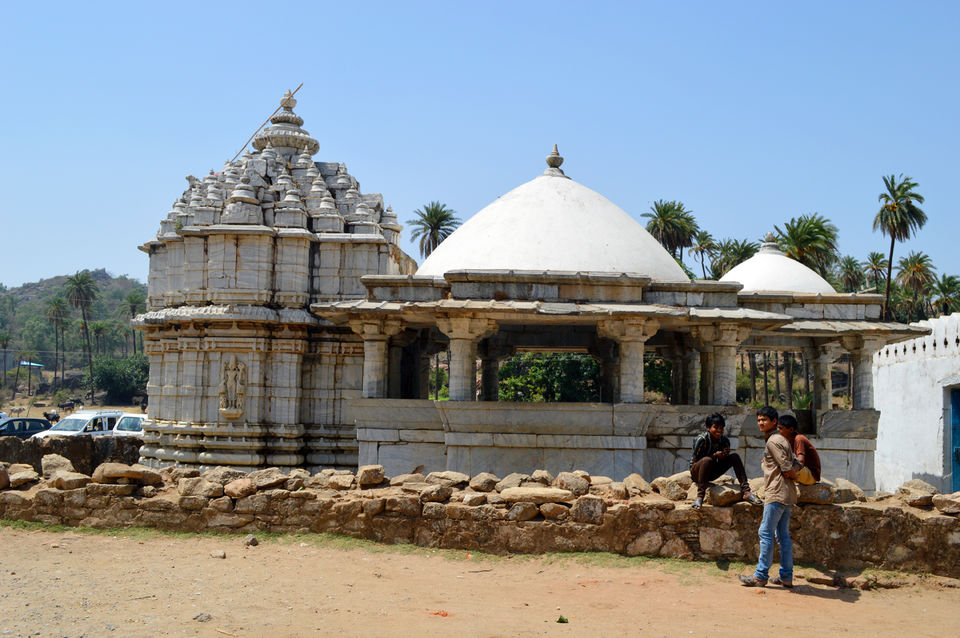
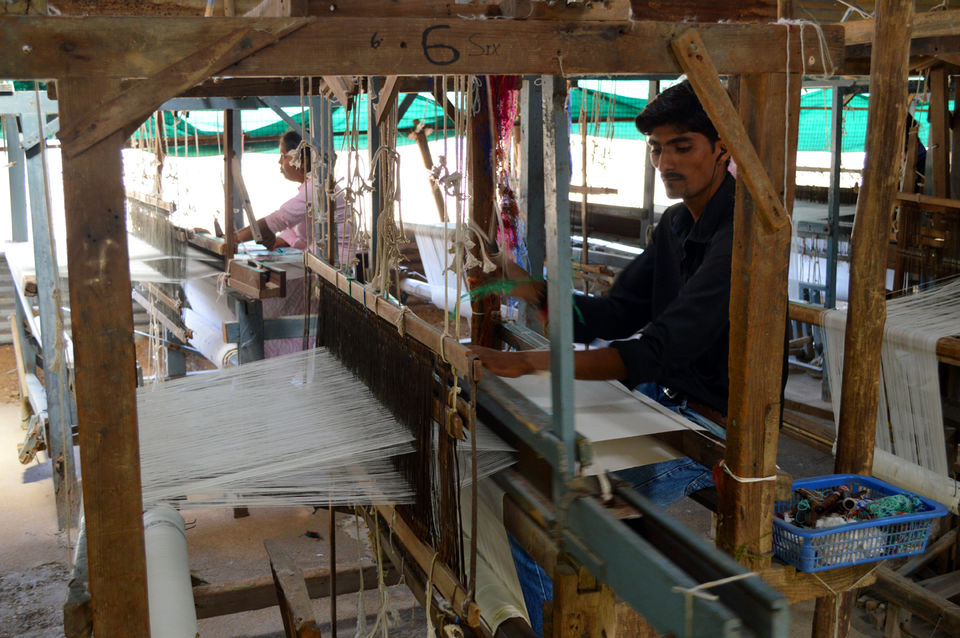
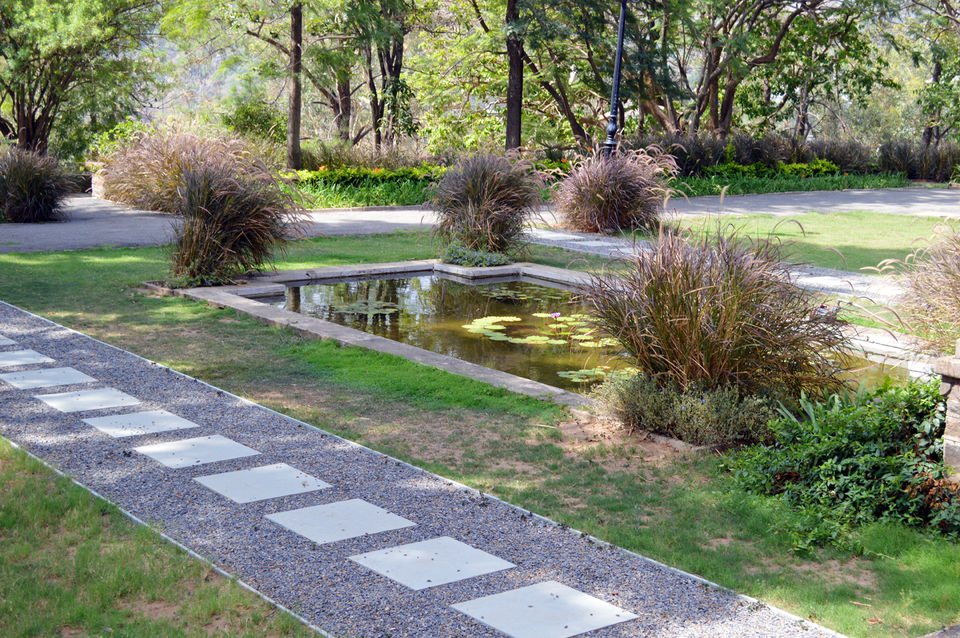
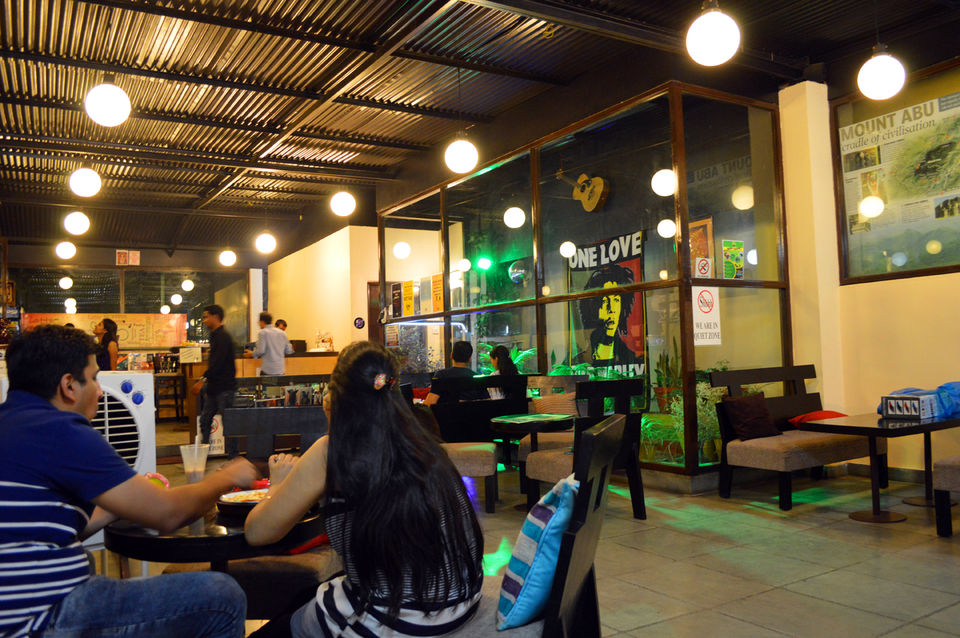
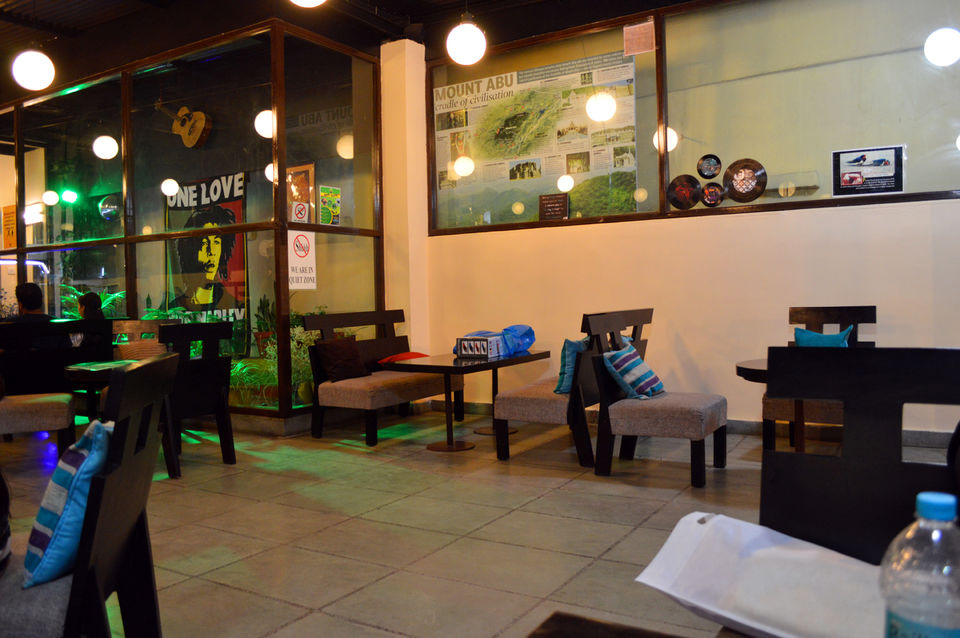
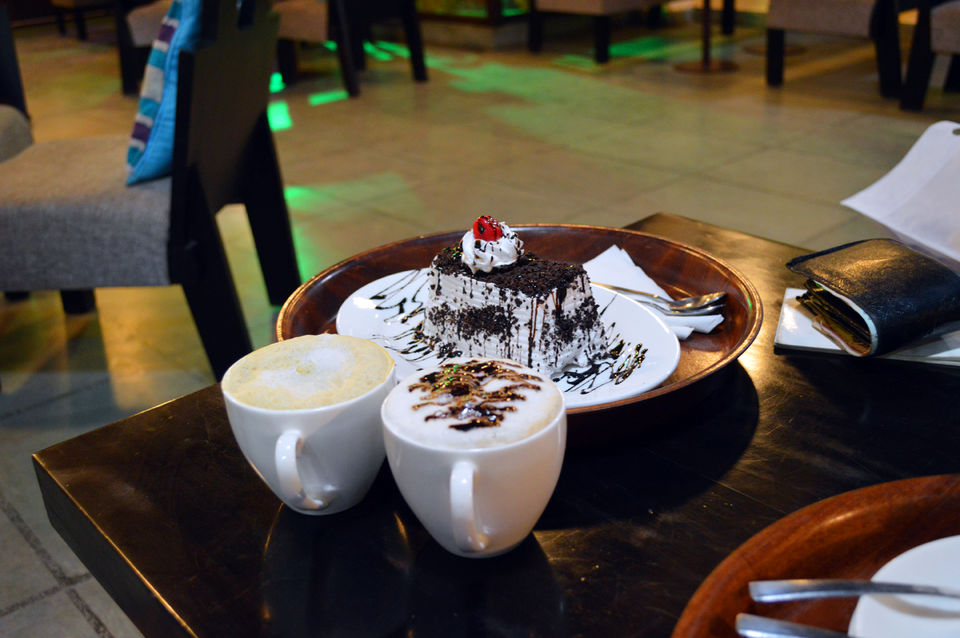
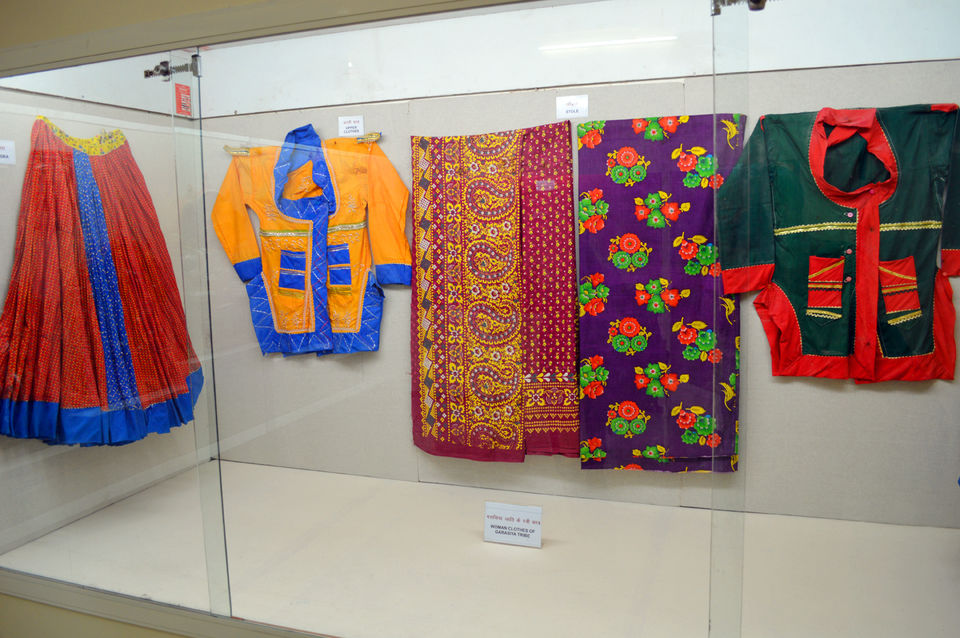
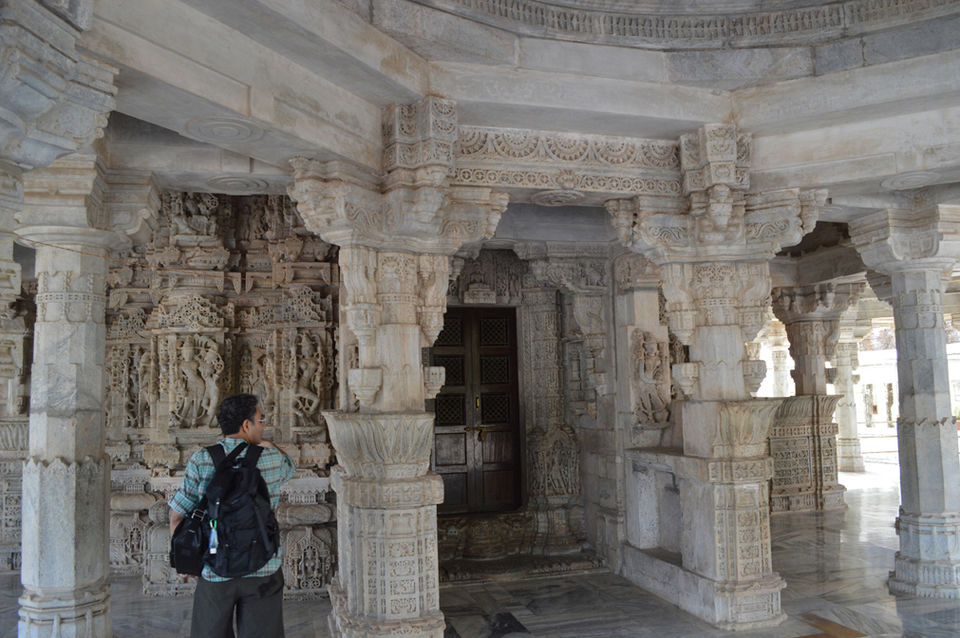
Good1. Location – it is perched on a hill.2. Nice lawn outside with chairs.3.Awesome view4.Spacious rooms and clean toiletsBad –1.Uncooperative staff.2. Owner has a bad temper and is neither polite nor co-operative.3.Food is below average. We doubt whether they have a cook or is it the room service guys who double up in the kitchen.4.Room service is extremely slow – for morning tea we had to wait more than an hour.
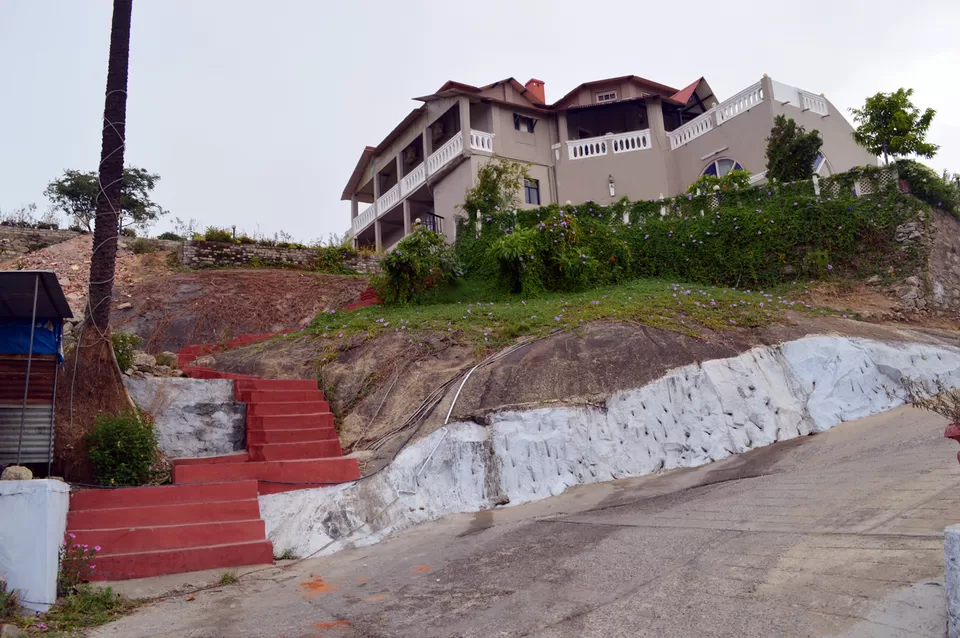
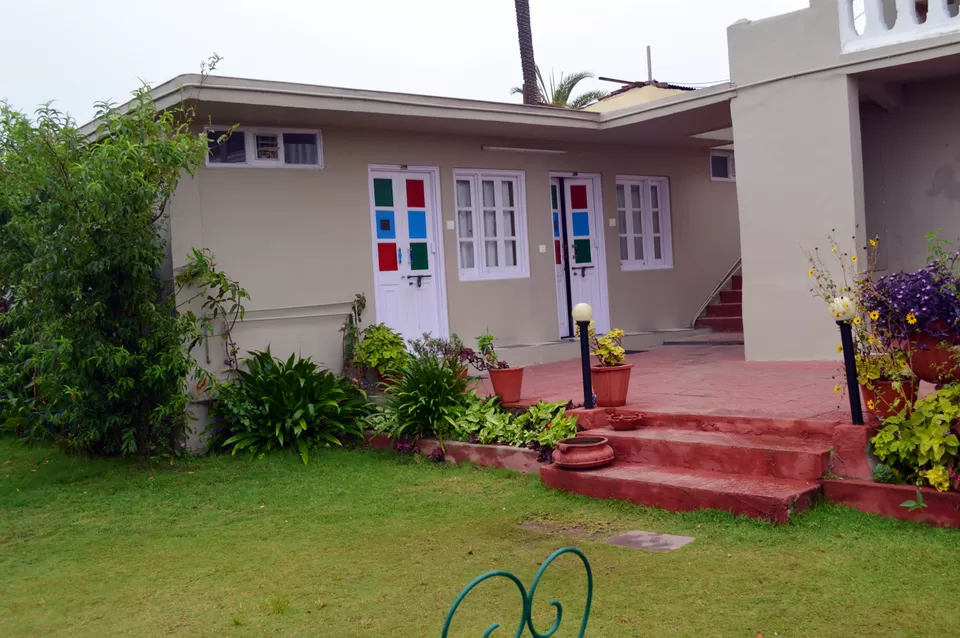
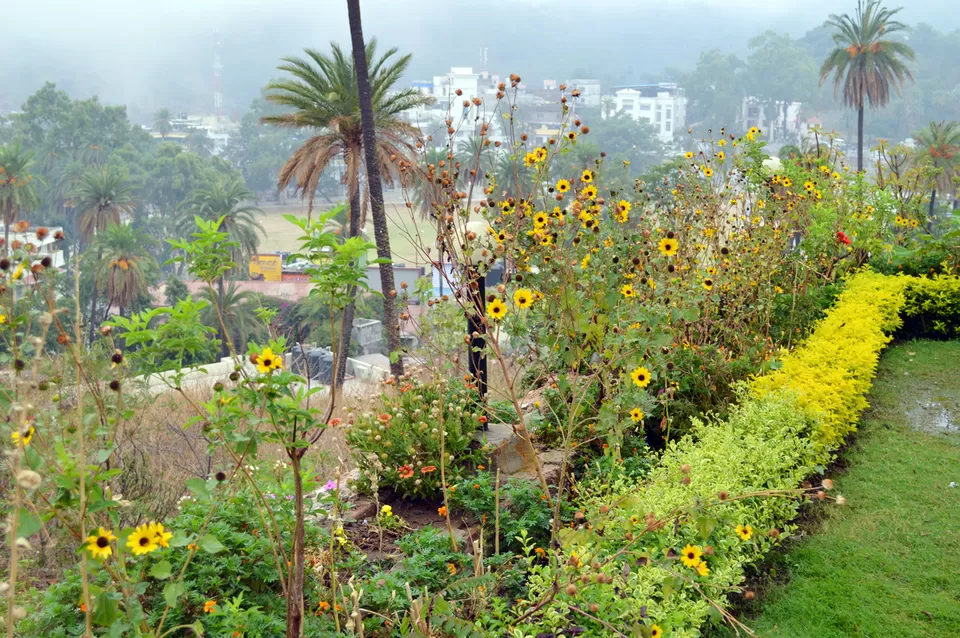
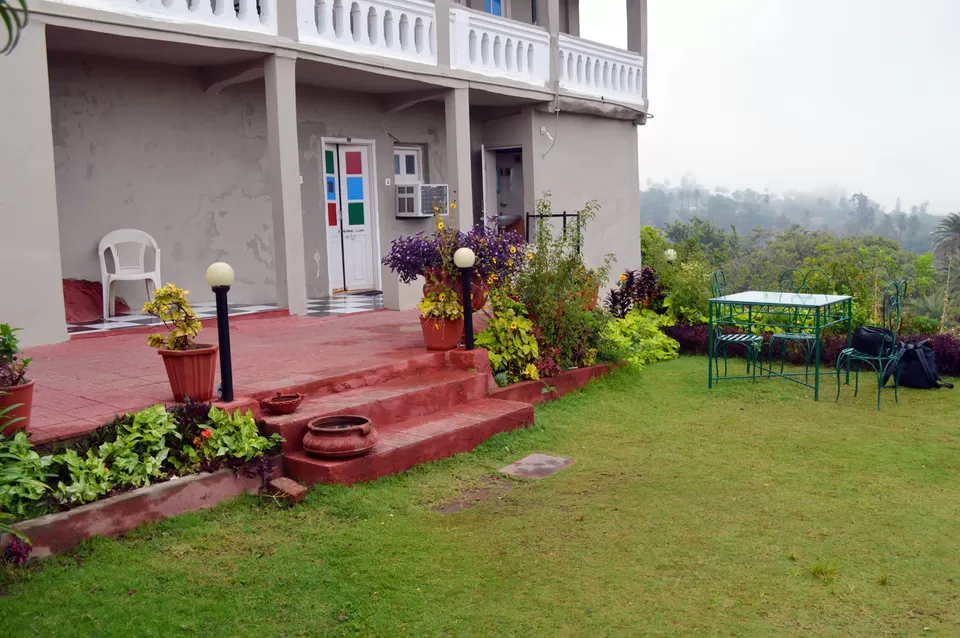
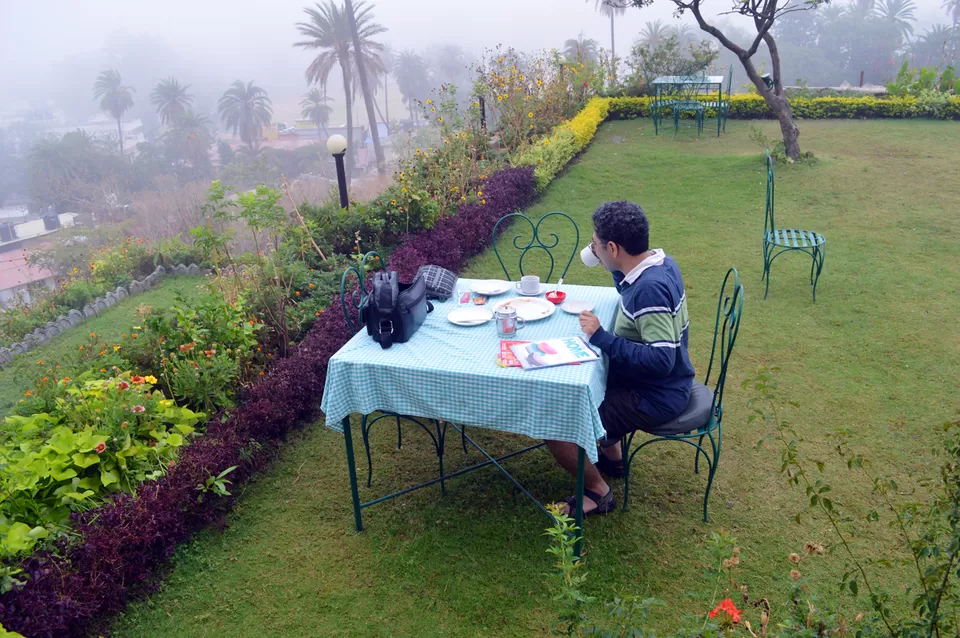
Nakki lake apparently has been named as such because legend has it that this lake was dug using nails (nakki). It’s a little like Naini lake though much smaller. Also, the surrounding topography is different. We paddled around in a boat for about half an hour (300/- for half an hour). It was a bright but breezy day. We were rejuvenated. There is a Bharat Mata temple on one of the sides. Tourists were having photographs clicked before the huge kitschy idol.Tip: Refrain from feeding stale puffed rice to the fish. This pollutes the water and may make the fish sick.

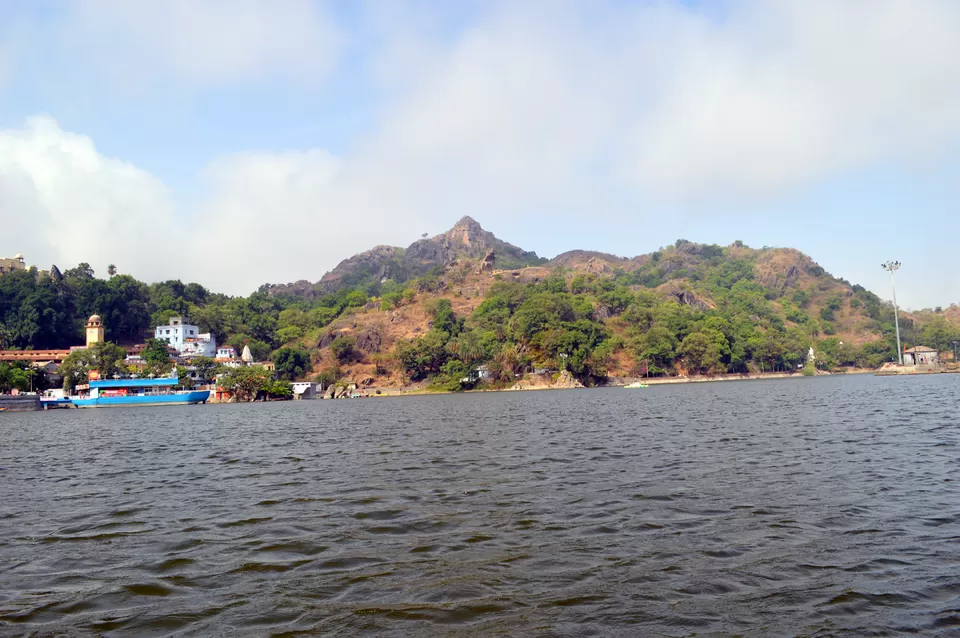
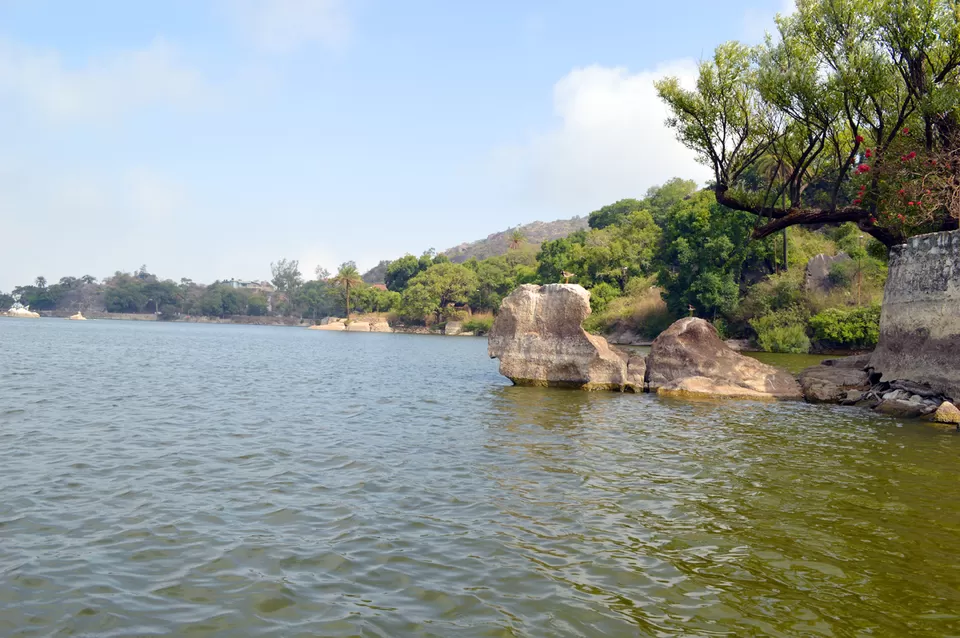
Mount Abu is a must visit for many to go to the Dilwara Jain Temples for religious as well as touristy reasons. After coming back from Nakki lake we checked into hotel, rested for a while which comprised a heavy brunch and a shower. after this break, we hired a bike and were on our way to Dilwara temples. The temples are a mere 2.5 kms from here and even in the middle of June, we were blessed with cool, breezy (even misty) weather. After crossing an unassuming gate and some security procedures (no mobiles and sadly no camera) we were inside the temple complex. The temples are intricately carved and reflect the opulence of the era - 11th to 13th century. The extremely ornamental carvings depict the Jain gurus, gods and goddesses, animals and humans, flowers and stars and various pleasant patterns. Each panel on the wall or inside the ceiling dome is different from each other and our jaws dropped at the meticulous detailing.The movement of the dancers on the walls / ceilings seem to be frozen in stone. The compassion of a mother is aptly depicted on the face of a female deity looking at a child. There is so much more that we want to say - hanging necklaces, lifted toes with clear toe nails, swaying elephant trunks. It is difficult to imagine just how the sculptors succeeded in rendering such a soft appeal to the hard marble stone . The art works are like soft music with a calming rhythm that can’t but touch one's senses.However, after a while our eyes stopped registering. If one prefers minimalism, the detailing may seem a little tiresome and you start questioning the excesses and the connection with the concepts of austerity and frugality of Jain philosophy. Nonetheless there they are, in all their brilliance, and are most definitely among the much cherished treasures of India.Tip: Forget your fancy camera at the hotel. If you want to click photos here, you are in for disappointment. Cameras are allowed only in one of the temples which is also under renovation.

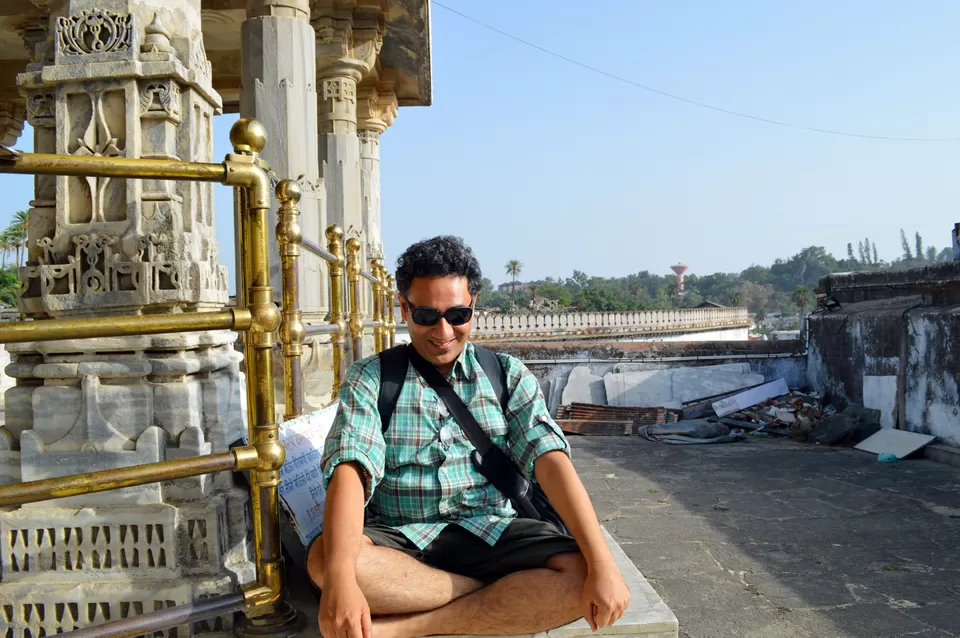
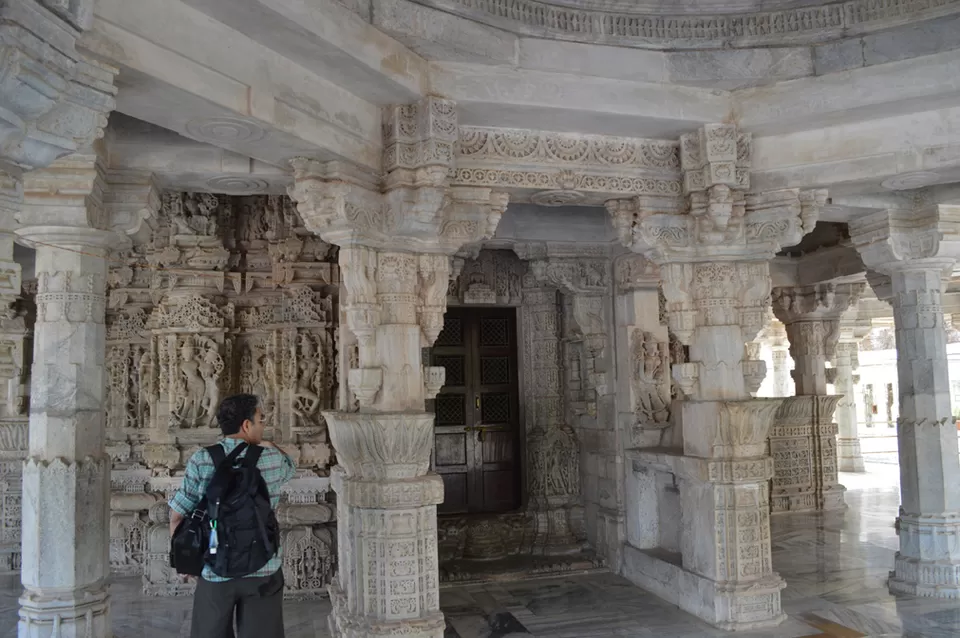
One of the myriad Brahma Kumari properties at Mount Abu, this comprises an auditorium with 3000 plus accommodation capacity. A guide gave us a 30 minutes orientation to their order. It seems like a little bit of an imposition.

Slightly ahead of Nakki lake, a hill is thronged by tourists at dusk for viewing the sunset. The way up was a 20 minutes walk (via carts for the aged and infirm). While we could not see any special magic, sunset anywhere is a poignant and peaceful time. We soaked in as much of the pastel colours from the sky.During our trek to sunset point, we noticed Rabadi men and women, who were carting people up and down, sport chunky but beautifully crafted silver ornaments. We went about looking for these in the silver shops in Mount Abu. However nobody carried this variety as these are exclusively bought by the Rabadi people and is not popular among tourists.On the next day, we came across some unassuming silver shops in the local market. They got out their huge collection of the rustic but very stylish and contemporary crafts in the form of body adornments – pendants – bangles – anklets - amulets - in geometric shapes with random stones or deity embossments.We got some heavy silver bangles (kadhas) - one that was shaped like a ram head (the horn and the eyes clearly visible) and the other was a traditional abstract design with coloured stones.Tip: For craft lovers – this is a delight. Don’t waste your time looking for this in souvenir shops or Rajasthali


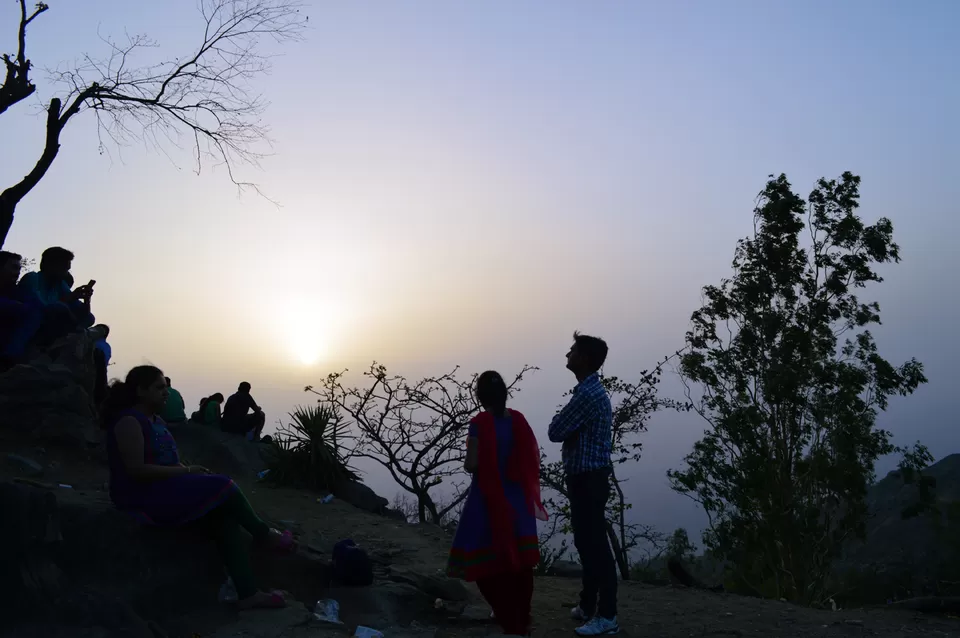
We biked up to Guru Shikhar in the morning. This was about 17 kms from Mount Abu. It is an ancient temple of Dattatreya, a three headed incarnation of Lord Vishnu perched atop a peak of Aravali (at an elevation of about 3000 ft – “Shikhar” – “summit”). It appeared to be a very popular destination among pilgrims. This was a marble carved temple enshrining a very peaceful marble idol of Dattatreya. A flight of stairs up there was a smaller shrine in the cave which, as per the legend, had the footprint of Lord Vishnu. While the shrine was beautiful, we were more impressed by the road between Mount Abu and Guru Shikhar.For one, Aravalis are very different in character from Himalayas. They are way more rocky, the rocks form structures that look like pieces of sculpture. The foliage was more adapted to a dry weather. There was predominance of palm trees of various varieties. Occasionally, a rare bougainvillea would surprise. The hills almost look like settings from an Arab themed resort. The climb up to Guru Shikar from where we had parked was slightly strenuous not withstanding the well maintained steps. On both sides there hawkers selling fruit juices, buttermilk and cut fruits and berries. Though it’s the farthest tourist spot, Guru Shikhar is a must do because of the lovely route as well as the enchanting climb that led to "God".Tip: Do look out for the pencils with small Rajasthani puppets on their head.


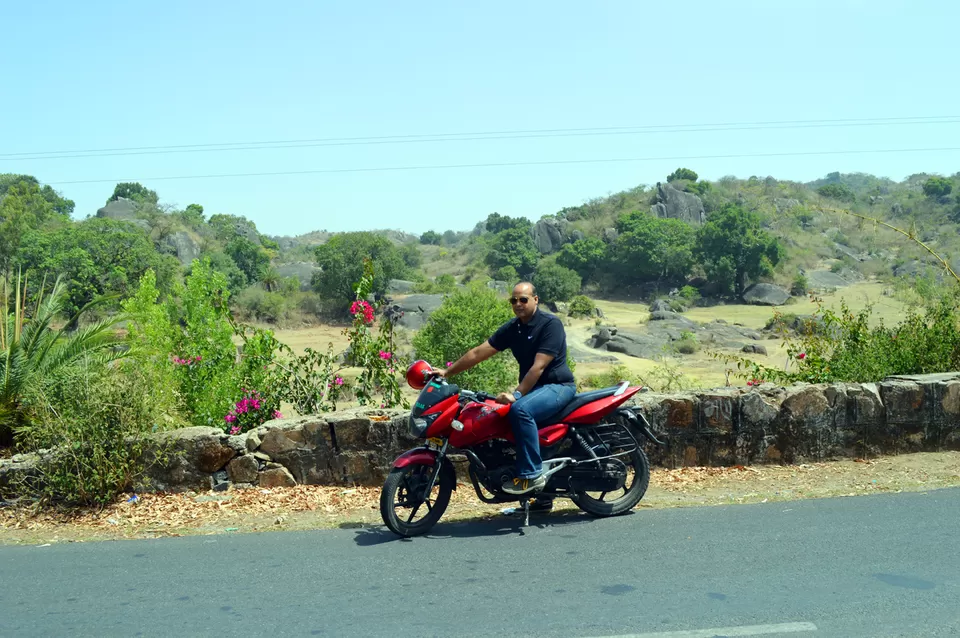
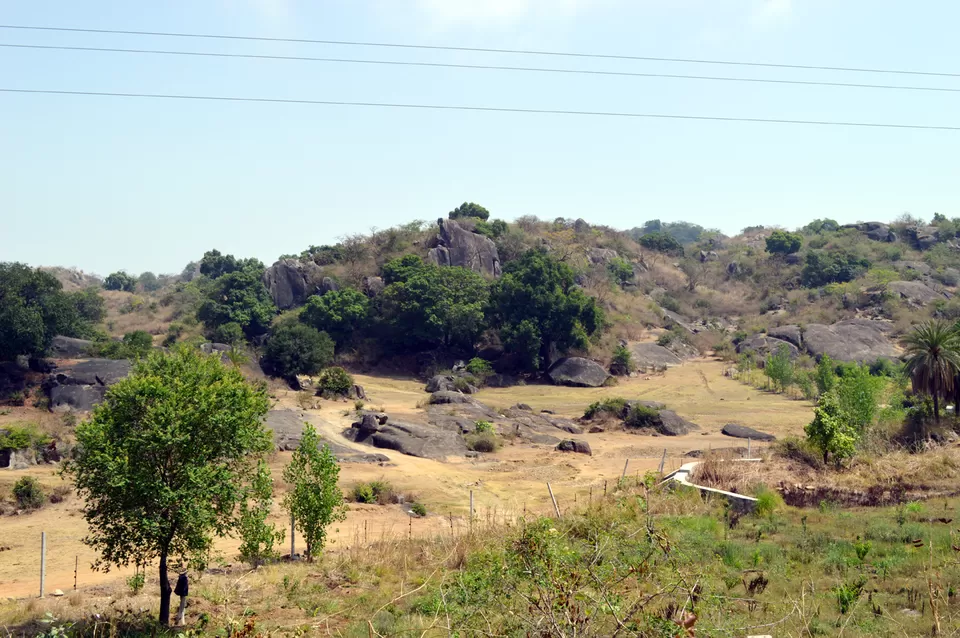
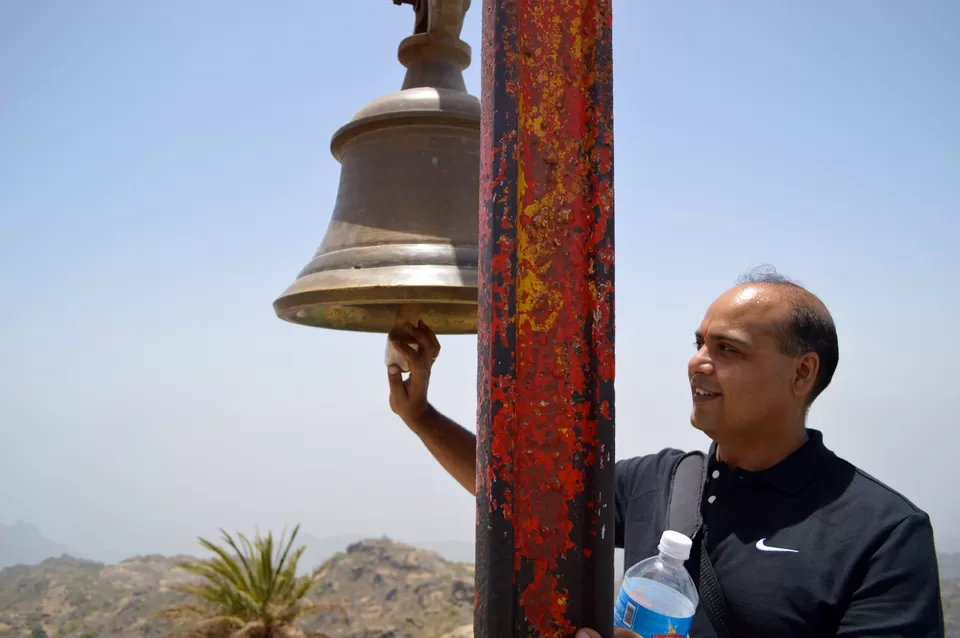
We visited another Brahma Kumari site on our way back from Guru Shikhar. This was a garden with some installations. The garden was well maintained and provided occasional benches and sitting areas. On an elevation in the garden was a huge Om. This seemed to be a favourite location for posing for photographs. They had some Brahma Kumari paraphernalia and guides to inform people about their order.Tip: Not a great place on a hot day

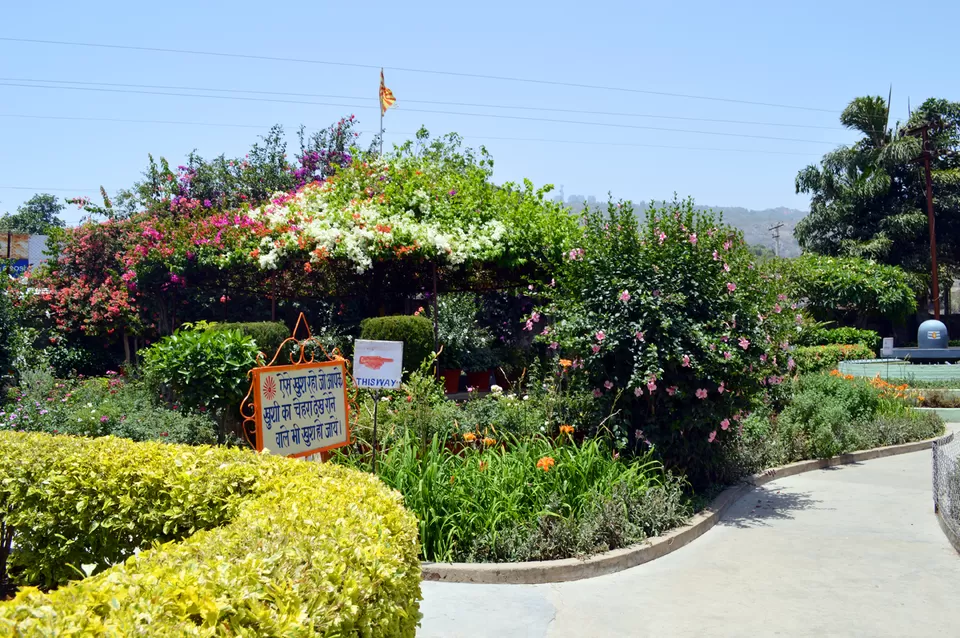
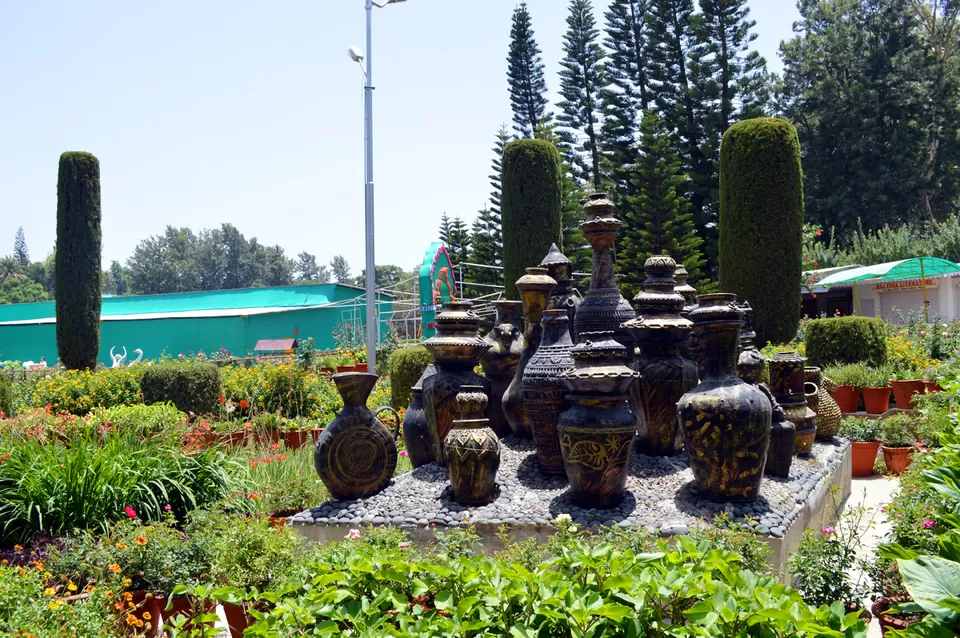
As soon as we parked our bike in the designated parking, we saw three life size statues of buffaloes on the bank of what appeared to be the remains of a huge pond. There is some mythological tale associated with these buffaloes guarding the nector in the pond. However we were mesmerized by their sheer artistry. They could be the pride of place in any modern art gallery of the world.We next moved to the temple. This was the same Dilwara style architecture albeit smaller. The main shrine had a beautifully carved dome. The sanctum sanctorum, instead of a Shiv murti (statue) or linga (phallus) had a small stone toe of the God.Outside were a huge Nandi and a smaller male statue, both of brightly polished brass. These statues were very enchanting and gleamed like gold in the sun.Tip: This is the only place in Mount Abu where parking charges apply. Further, they charge Rs. 10 for clicking the brass Nandi which is totally worth it.


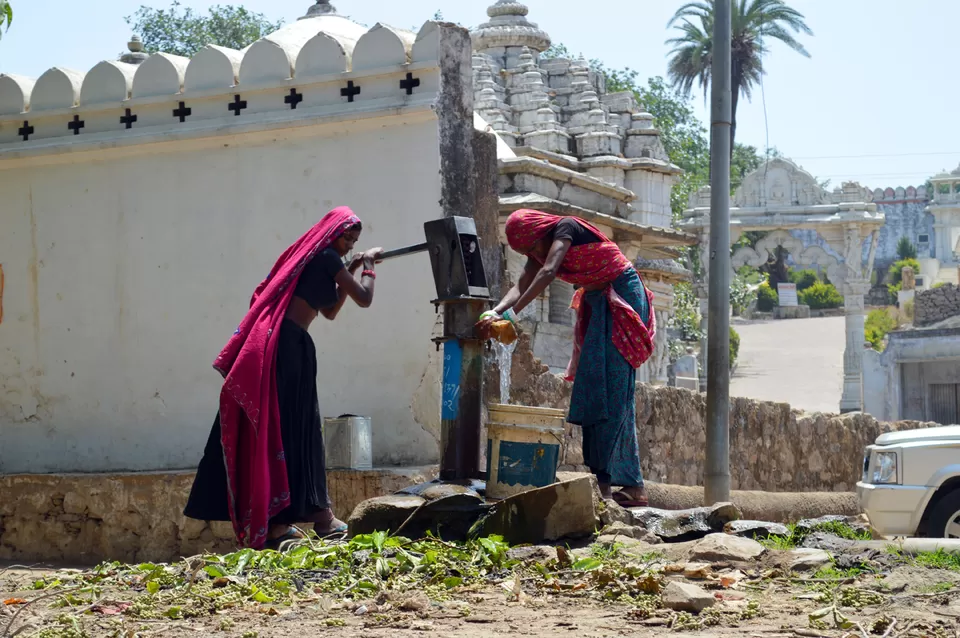
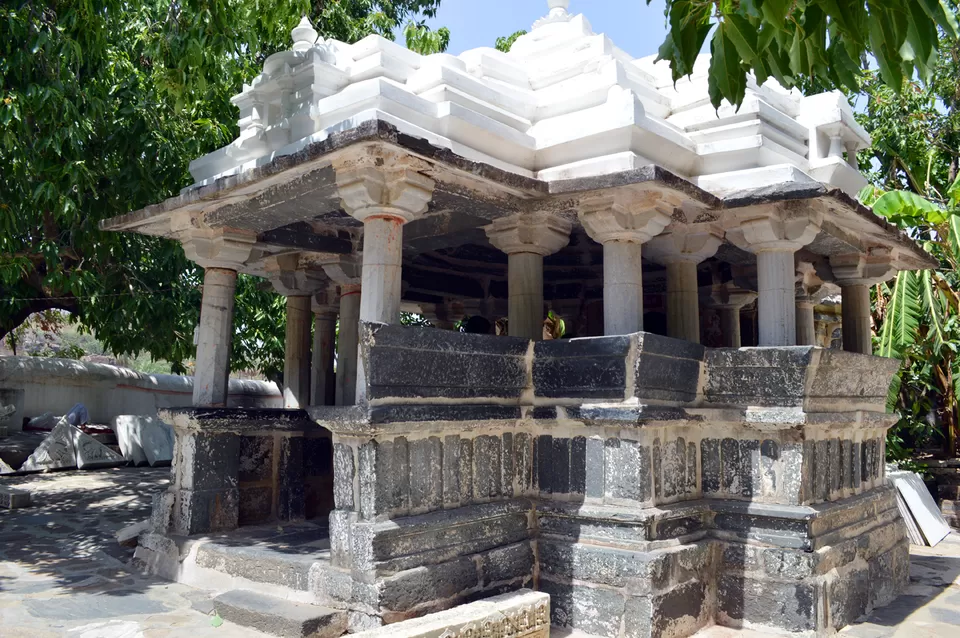
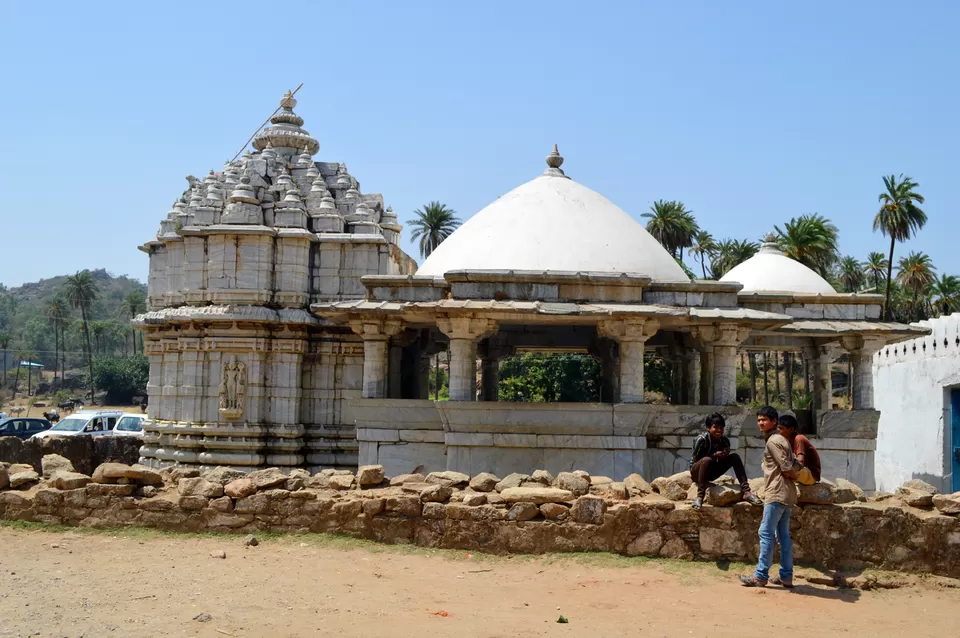
Between Achaleshwar and Mount Abu we noticed a rabbit farm. This cooperative society bred Angoora rabbits for their fur. They seared the fur and wove scarves, shawls etc. We saw the farm and the array of handloom where workers were weaving subtle patterns using the super soft angoora wool.Tip: You can pick up their wonderful products and they give you discounts too.

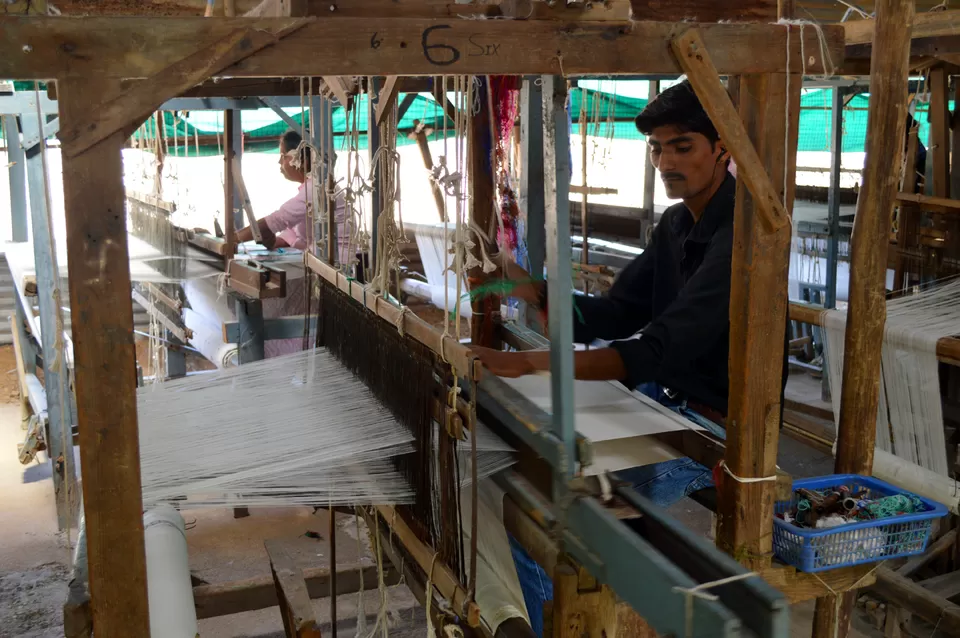
Bikaner House, on the outskirts of Mount Abu, is a beautiful property in the style of Rajasthan haveli. The place is surrounded with well maintained gardens and a lotus tank. We wanted to have a late lunch but given that lunchtime was over, we had to make do with tea and mixed pakoras. This turned out to be a very delectable experience after all since both the tea and pakoras were very tasty.


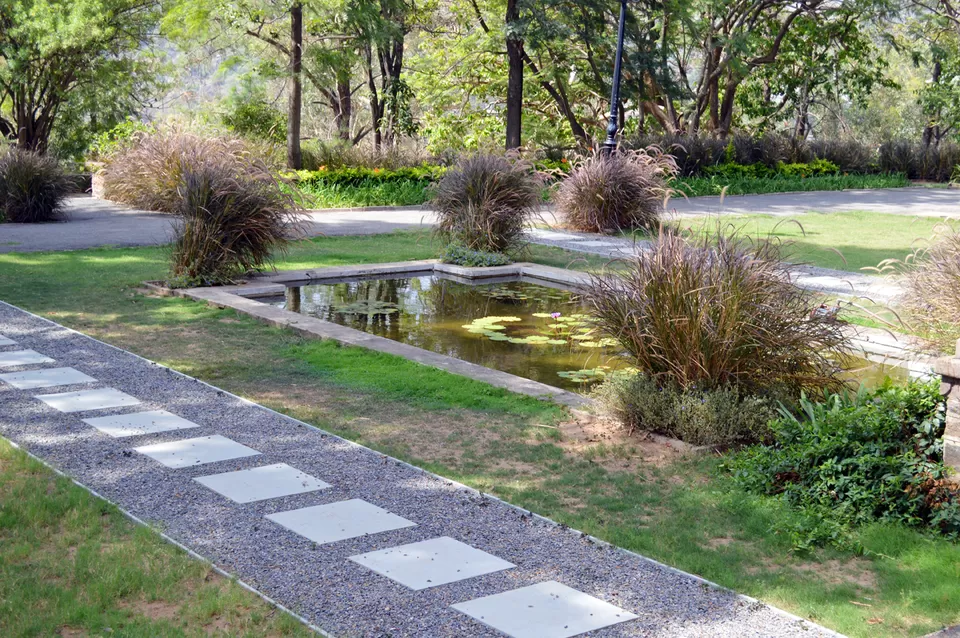
This is a huge souvenirs store that carries nick knacks, show pieces, crockery, Jaipur quilts and even sarees and other clothes. Some of these goods may seem a little tacky but there is much that could appeal to a discerning eye. We bought Sanganer print sarees and batik salwaar kameez material for folks back home.
Rajasthani block prints, renowned for its small decorative and delicate floral patterns, are printed on cotton and silk. Odhna is a store that carries such printed items – sarees, scarves clothes, yardage and linen. You could pick up table cloths / bed sheets from this store and amaze at how your home transforms!
This is a biker style cafe, well done up place albeit a little out of place in the simplicity of Mount Abu. The management fares highly on the hospitality. However the orange coffee, hot chocolate and black forest cake that we ordered left a lot to be desired. Nonetheless the peaceful environment gave us the opportunity for sitting and typing some of our blog.Tip: Enjoy the place for what it has to offer but do not compare it with joints in Delhi.
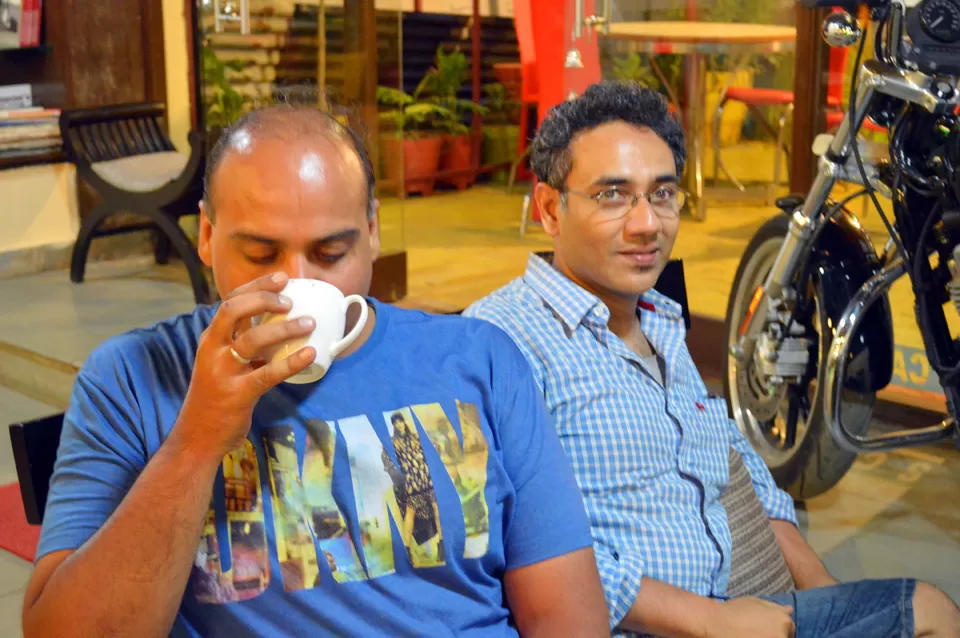
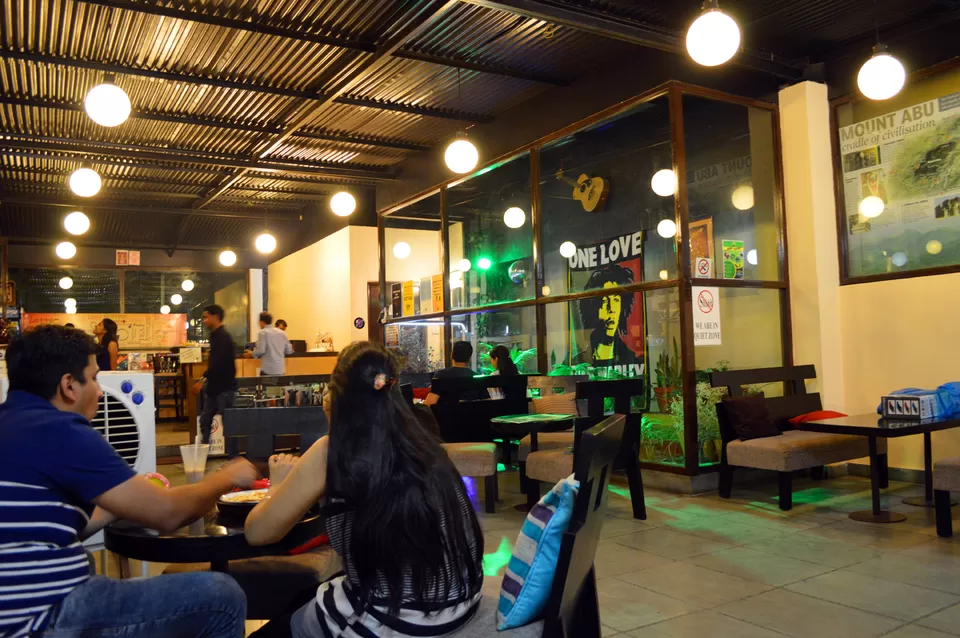

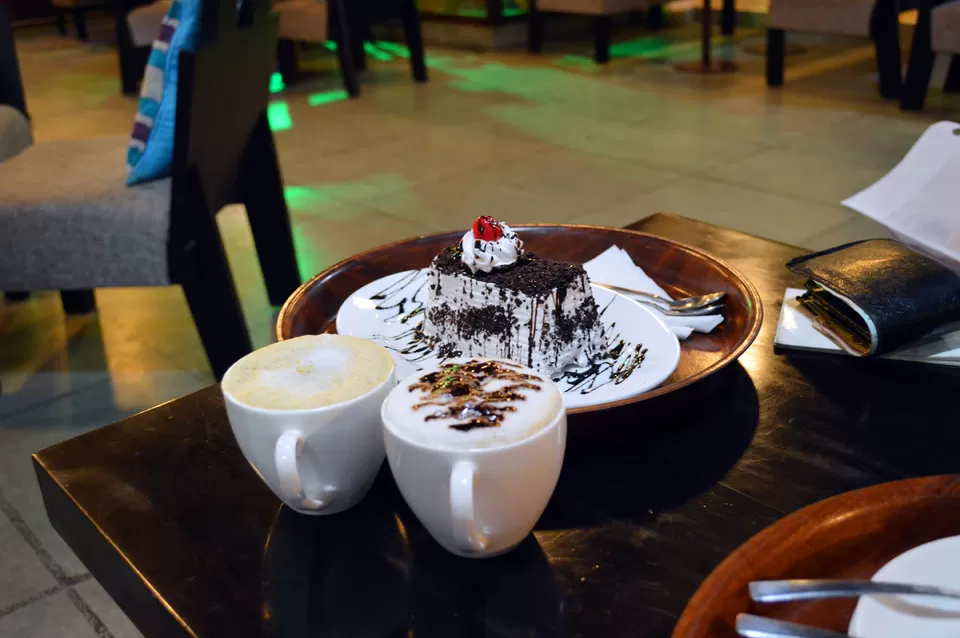
We had spotted this restaurant in top ranked eateries of Mount Abu. We went there for a late Sunday breakfast. We had omelettes, tea and chicken sandwiches. The chicken sandwiches were fried in butter making them hard to consume. The remaining items were good.Tip: The place is overpriced and overrated
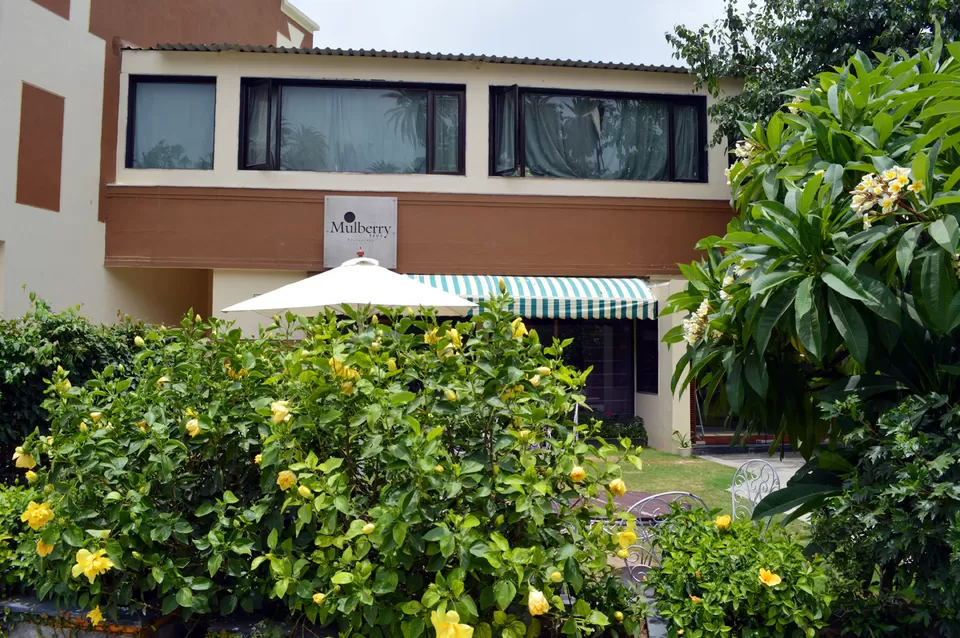
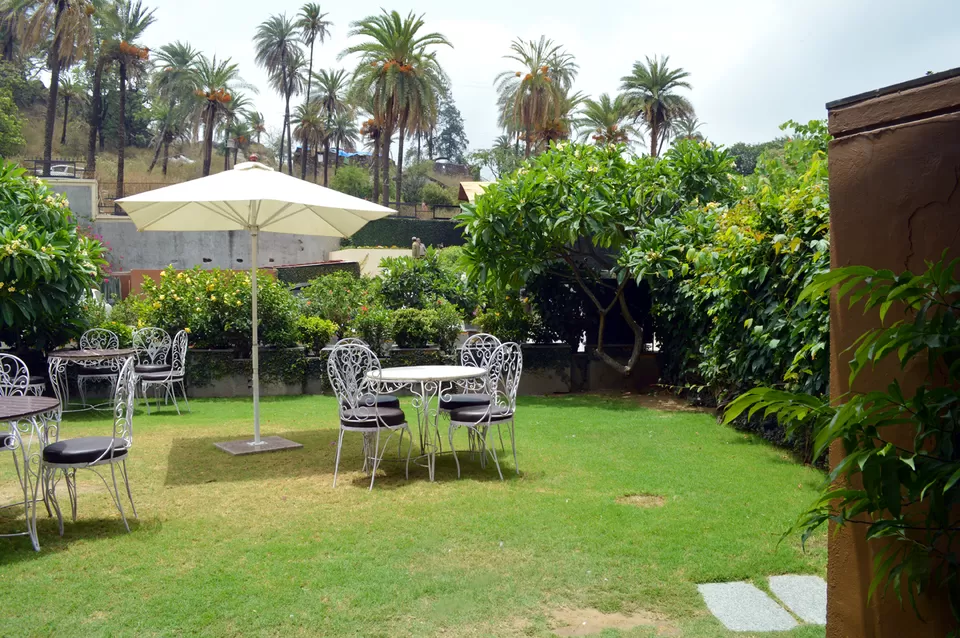
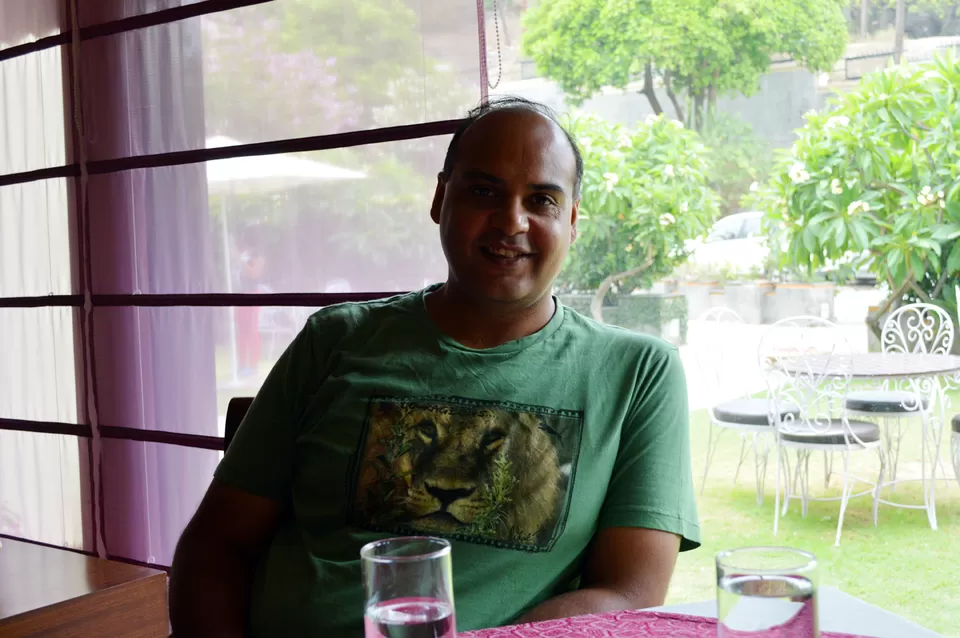
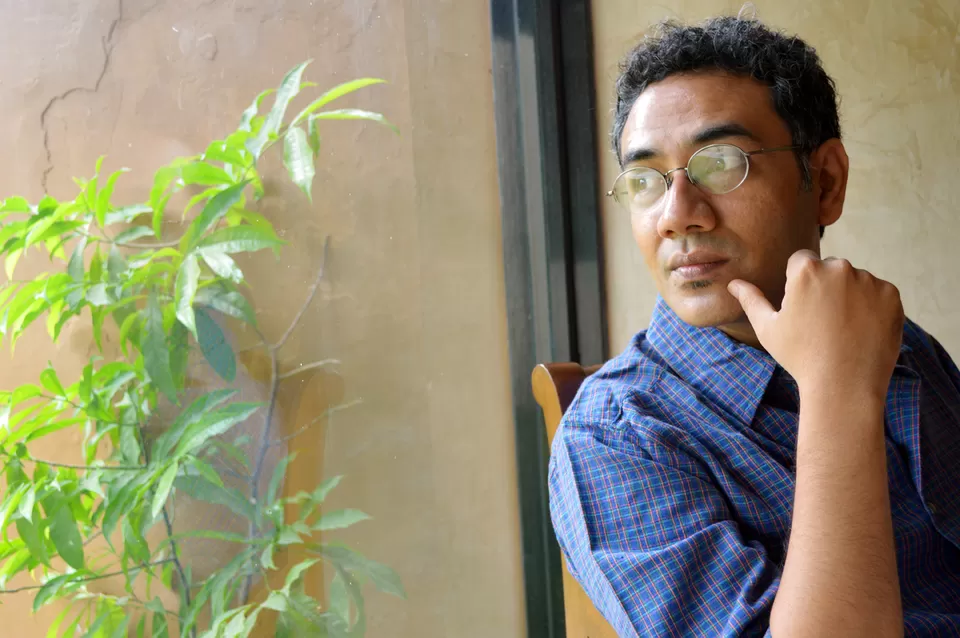
This is a cosy display which can be broadly classified into two segments. The first segment carried items from daily life of the locals. The neat display here has a variety of clothes, ornaments, arms and votive items; The second segment has relics from the ancient temples and structures in the vicinity. We saw some magnificent statues of the Gods Shiv, Agni, Vishnu and Jain gurus and apsaras that dated between 8th and 13th century. We were the only visitors and it was quaint that they switched on the lights and fans for us.Tip: A must do for tourists who like museums

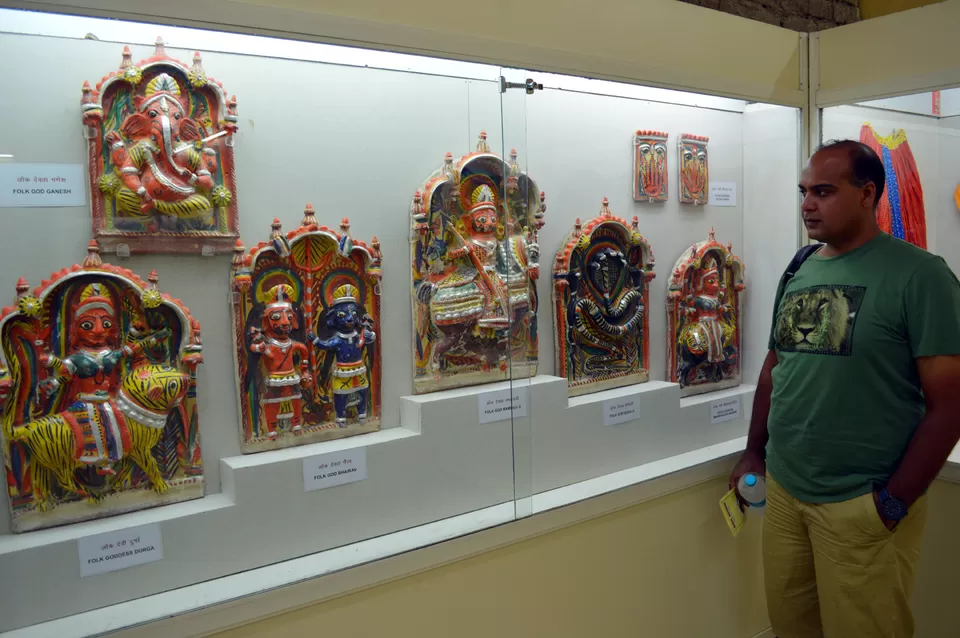
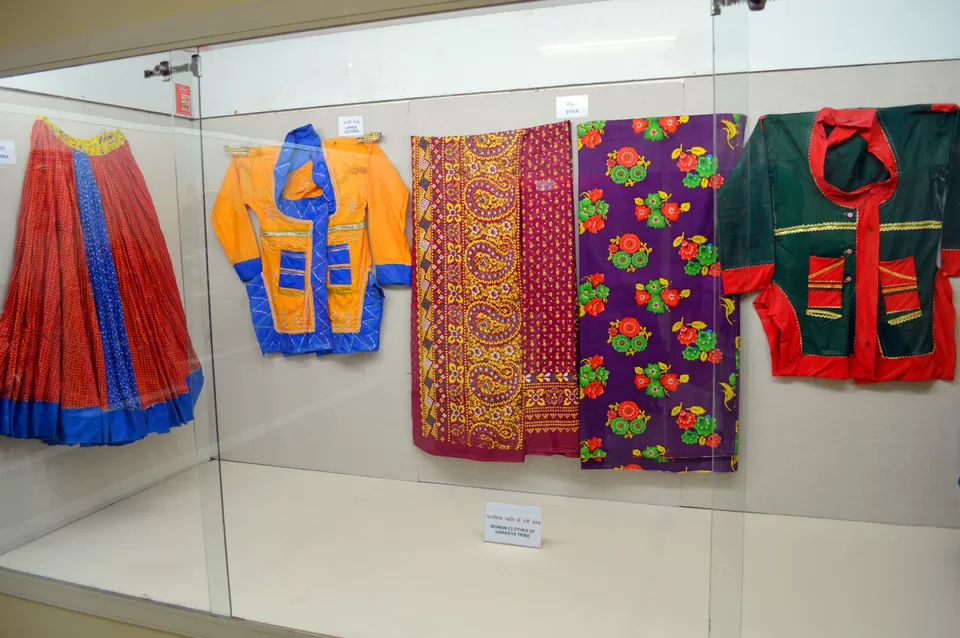

The government crafts store is a huge disappointment. The store was full of machine made stuff and pedestrian ware at bloated prices. The products did not carry Rajasthali labels. Further, given the richness of Rajasthali stores in Jaipur / Delhi / other states, we suspect that most of the goods here are spurious.
Mount Abu was originally called Arbudanchal, named after Arbuda Devi. We visited the arbuda temple which is at a higher altitude and can be reached by climbing up a flight of stairs. This was the last place we visited before ending out trip of Mount Abu and heading for Delhi. It took us approximately 20 minutes to reach the shrine using stairs. And we are glad that we made the effort since this was a cave temple. We had to crouch through a very narrow hole to enter the Sanctom Santorum that housed a gorgeous stone image in black decked with ornaments and silk. The goddess apparently is one of the forms of Shakti and is extremely revered among the locals.
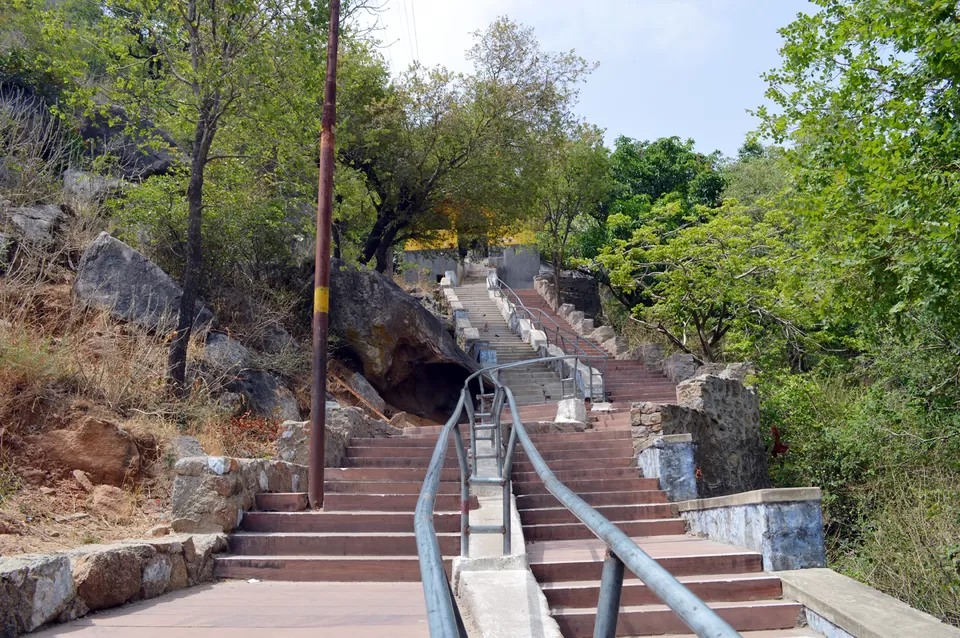
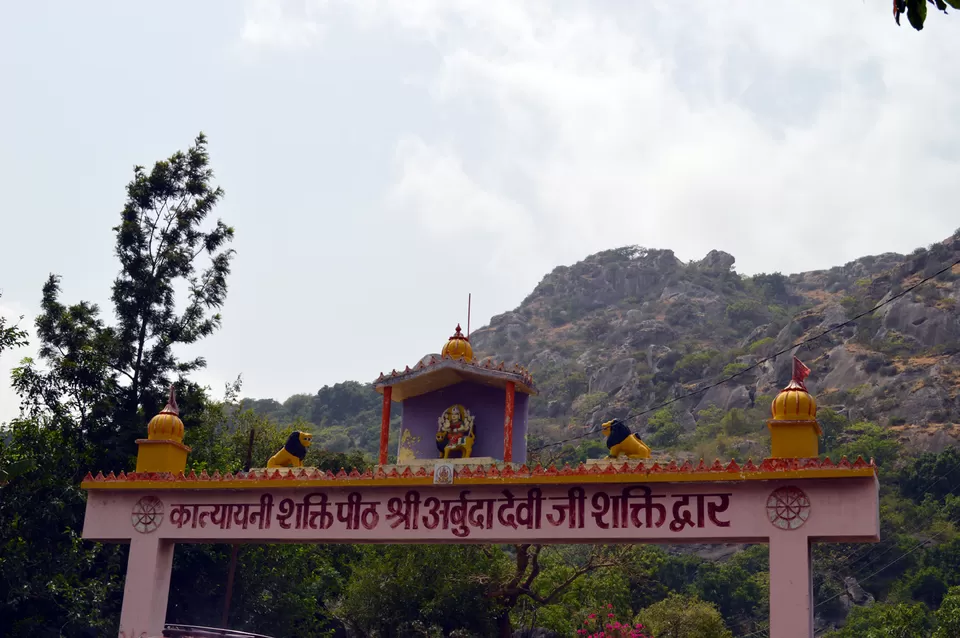
We did the de rigueur for a Rajasthan holiday and had dal bati at a road side joint. The food was average. Given the mirchi, on request, they served white gur. This made the meal memorable and our trip complete.





